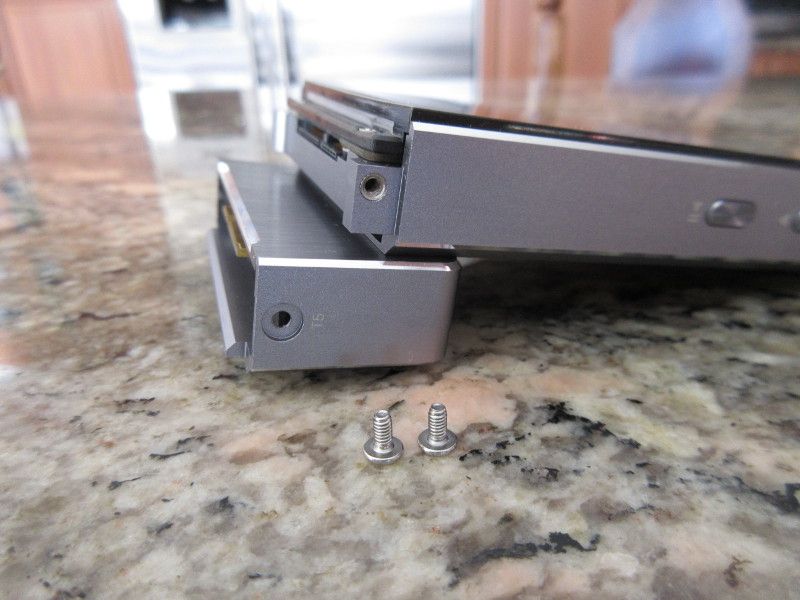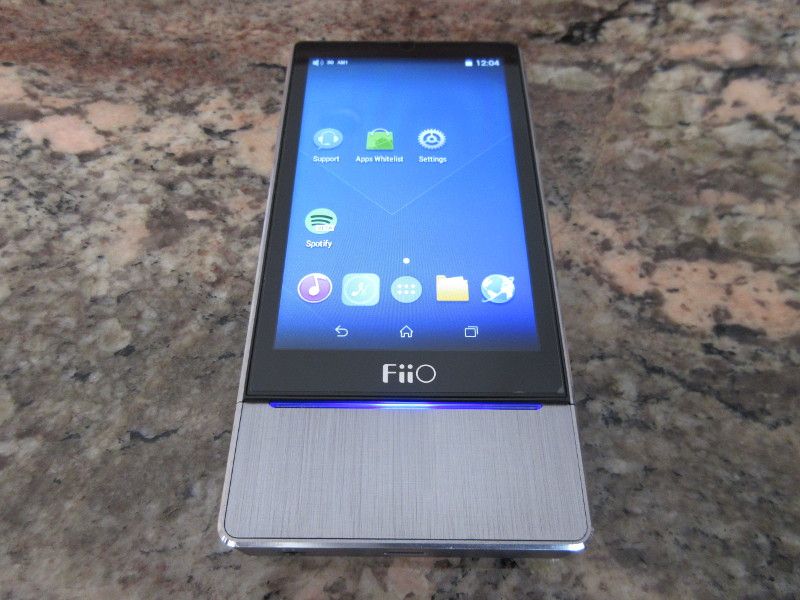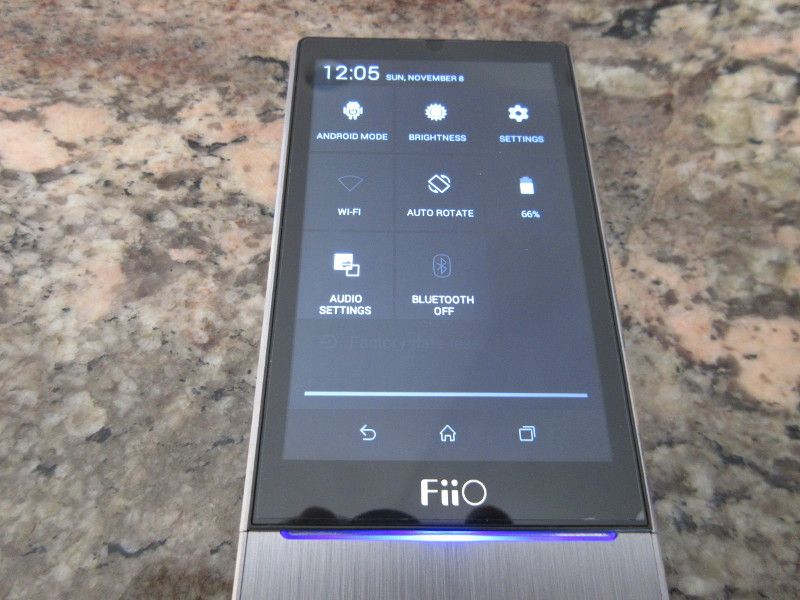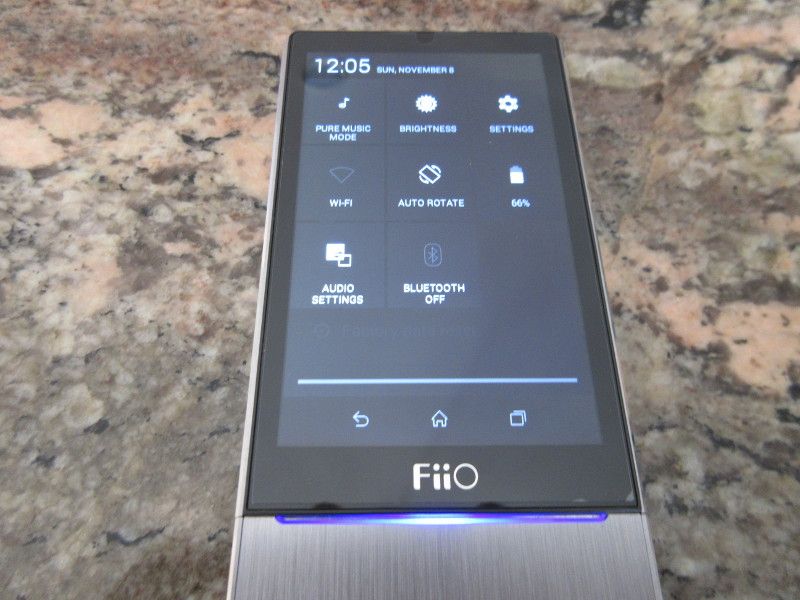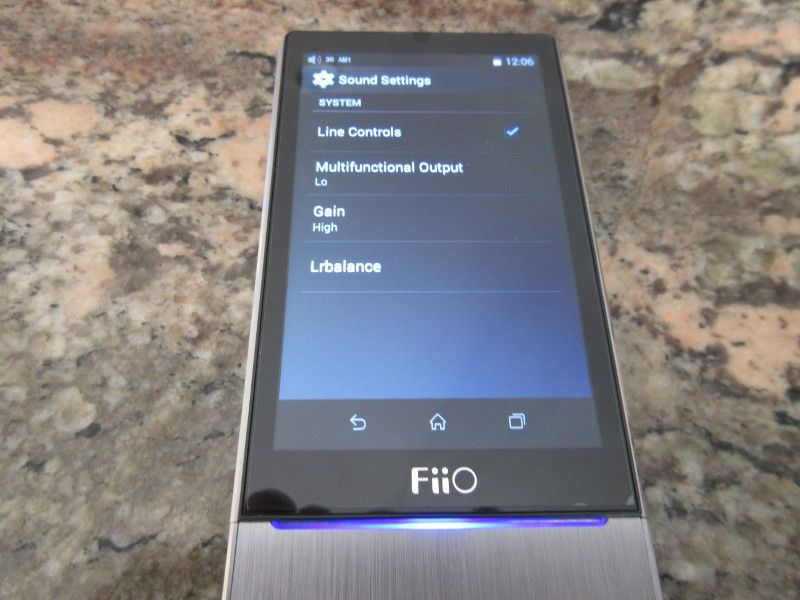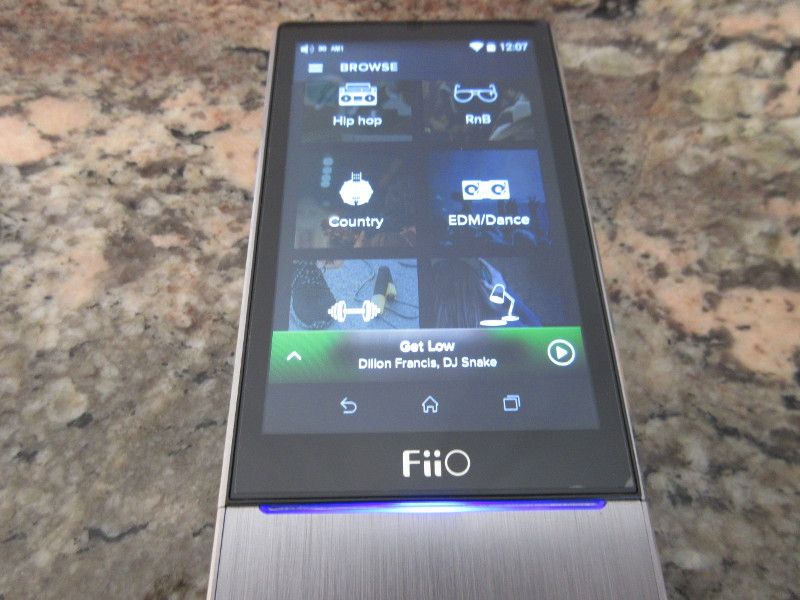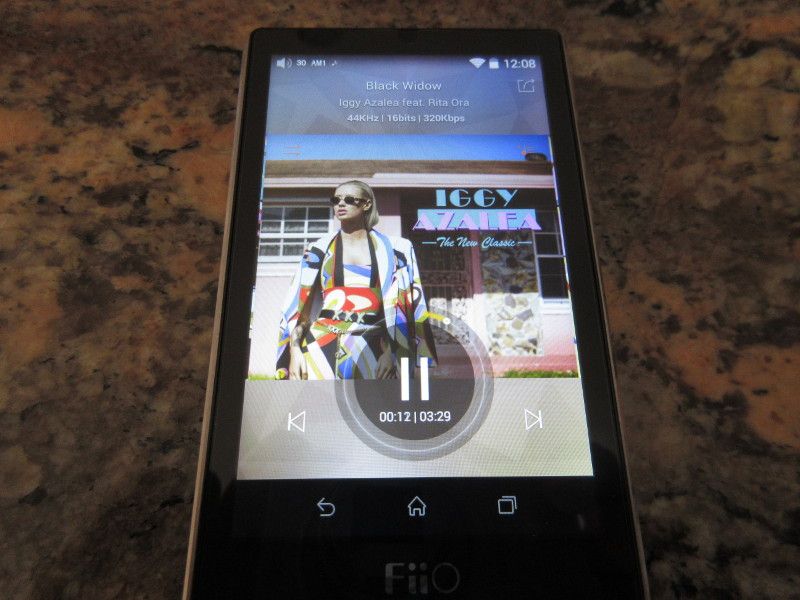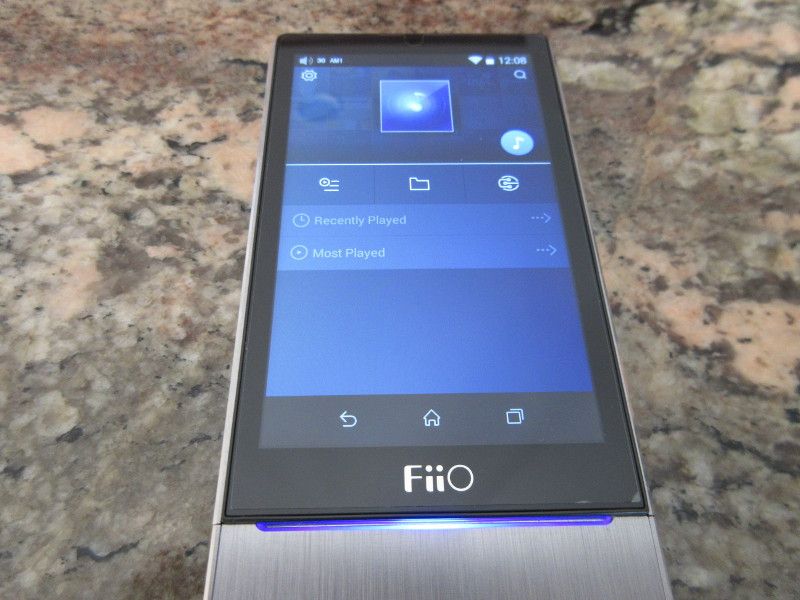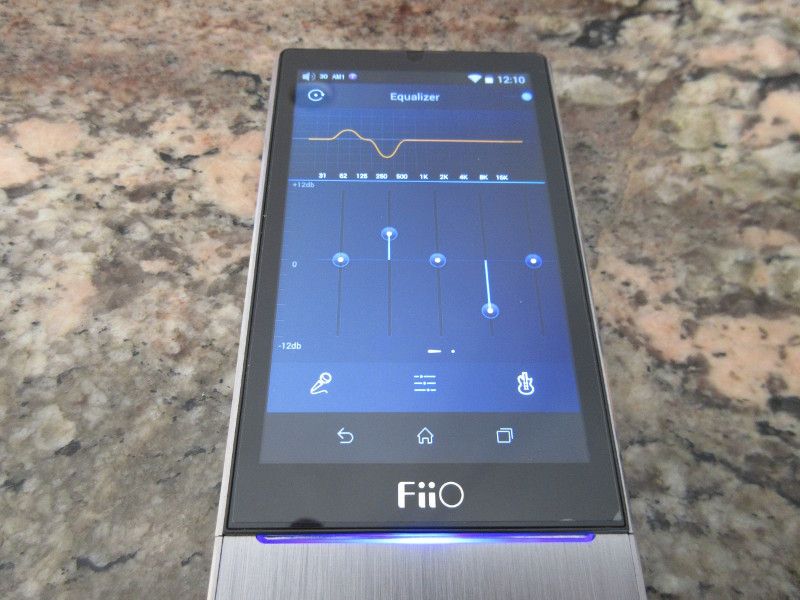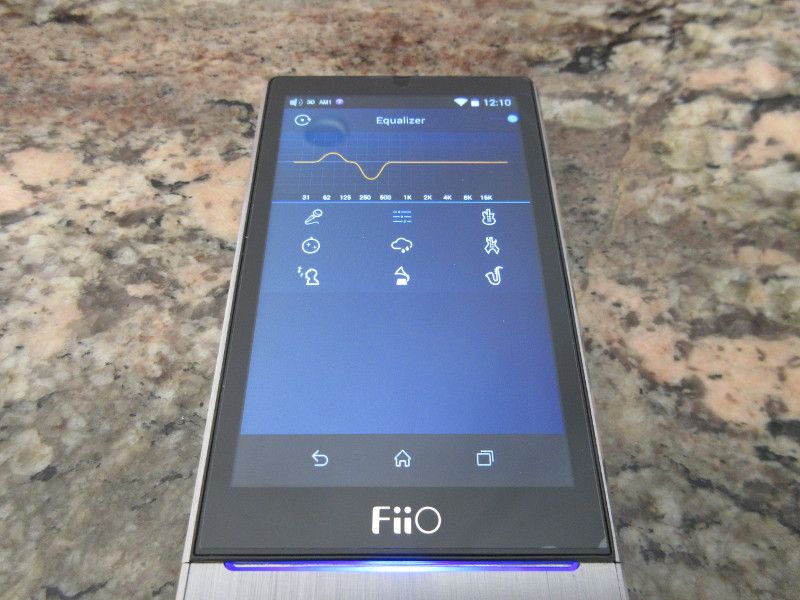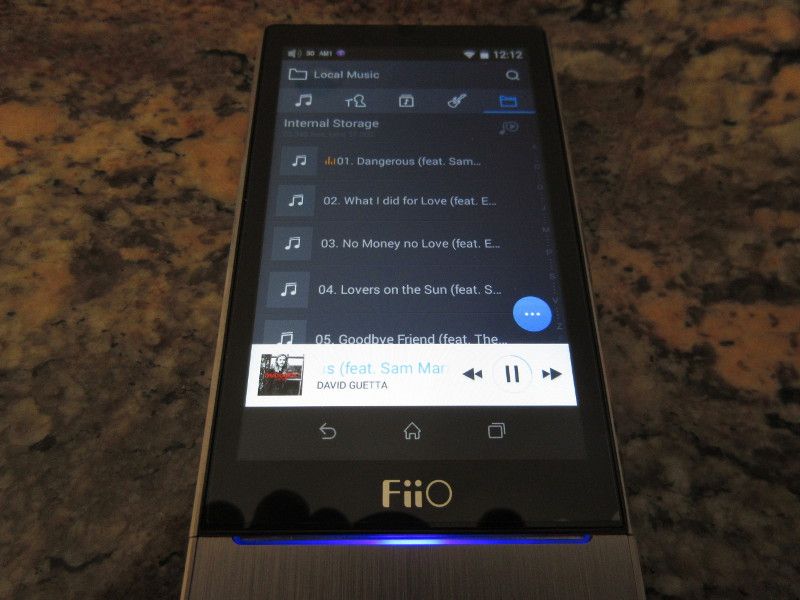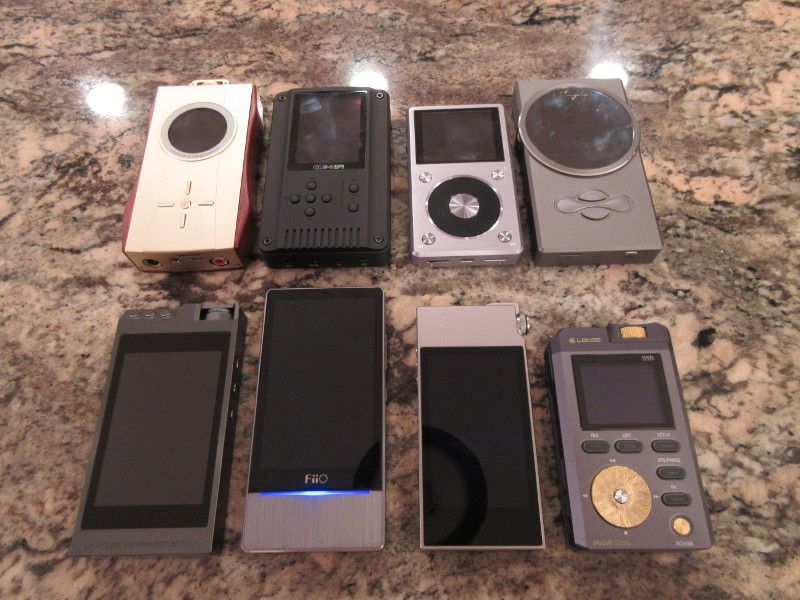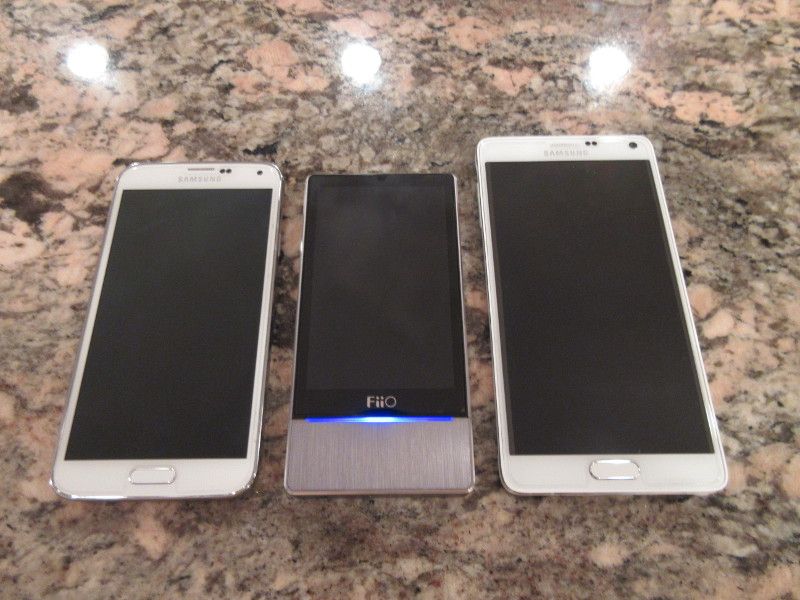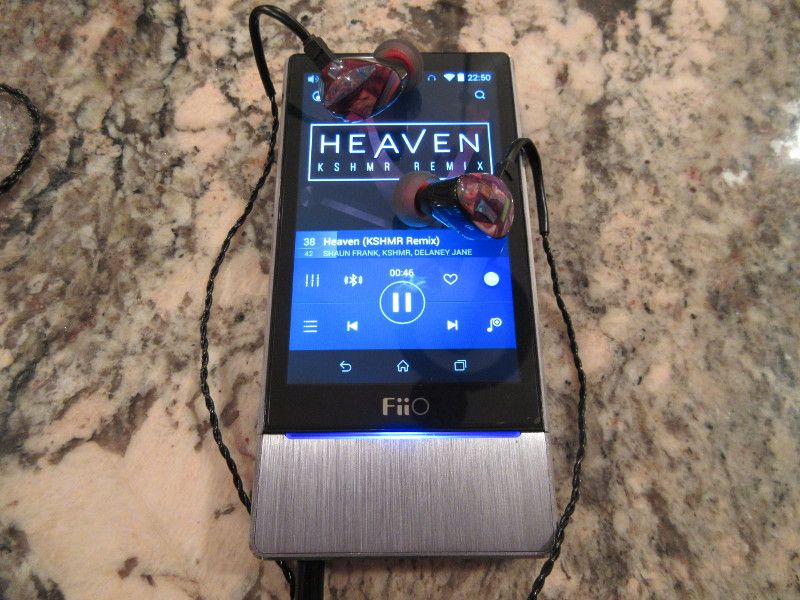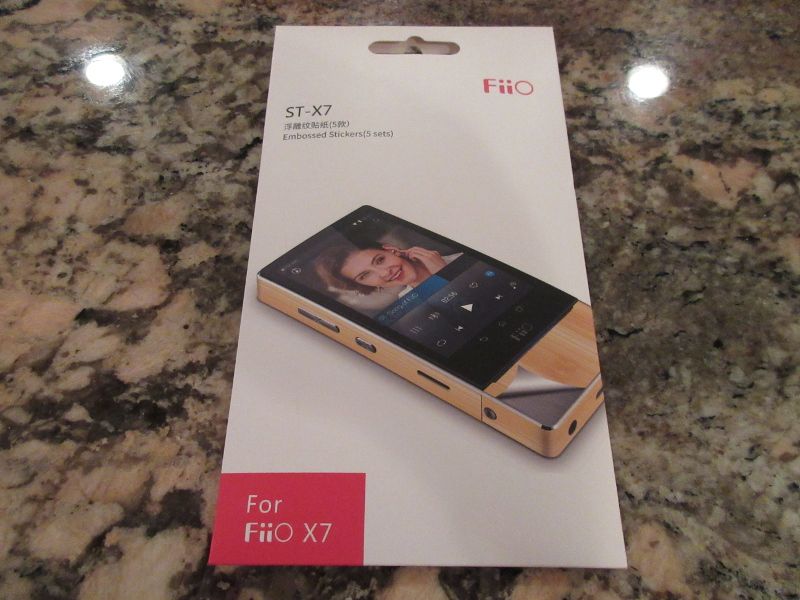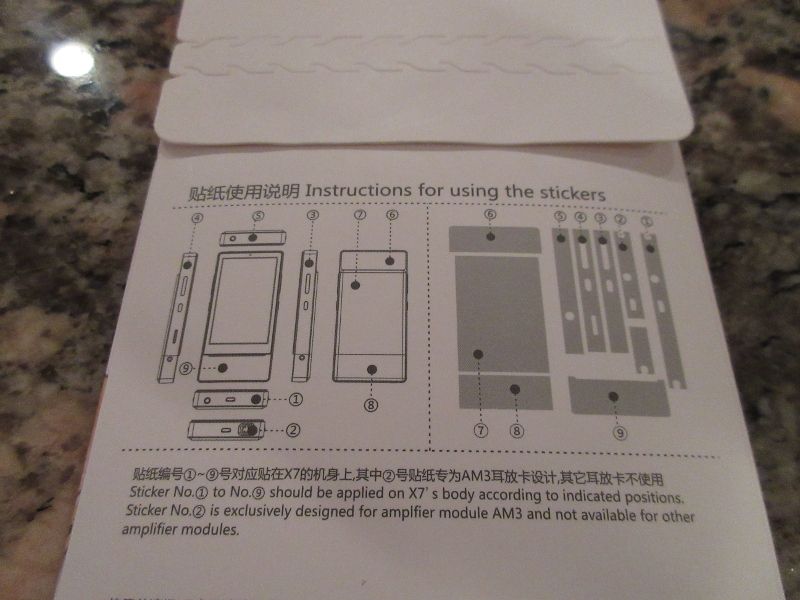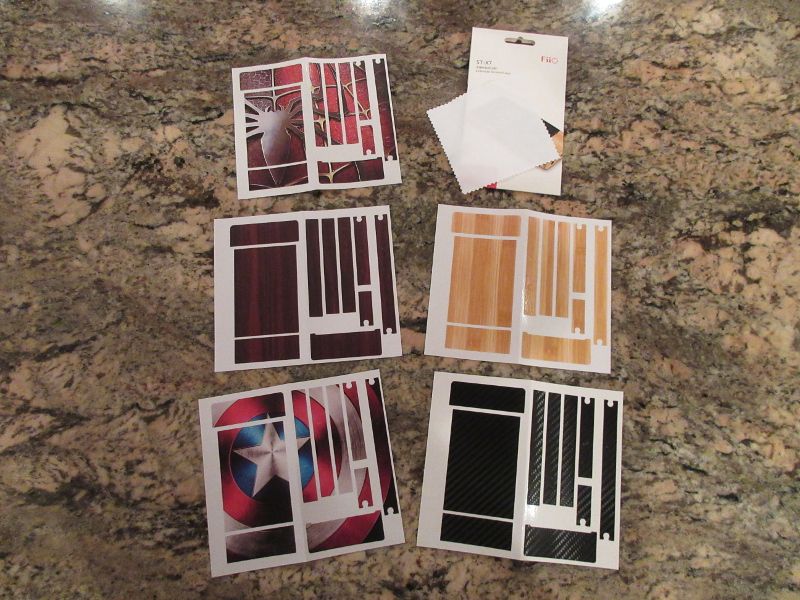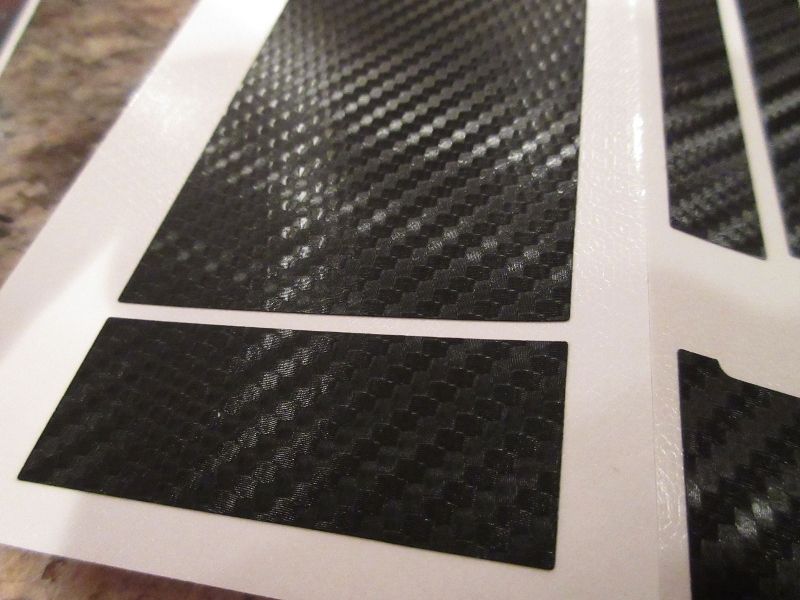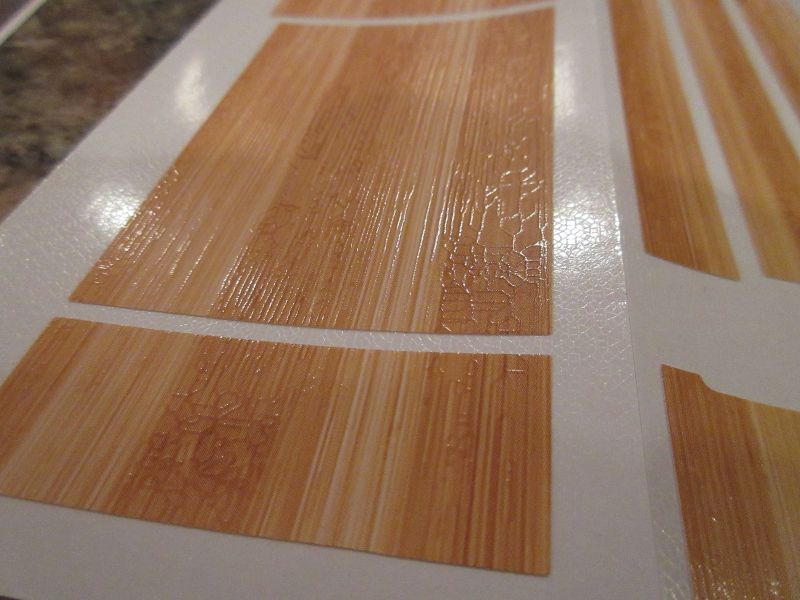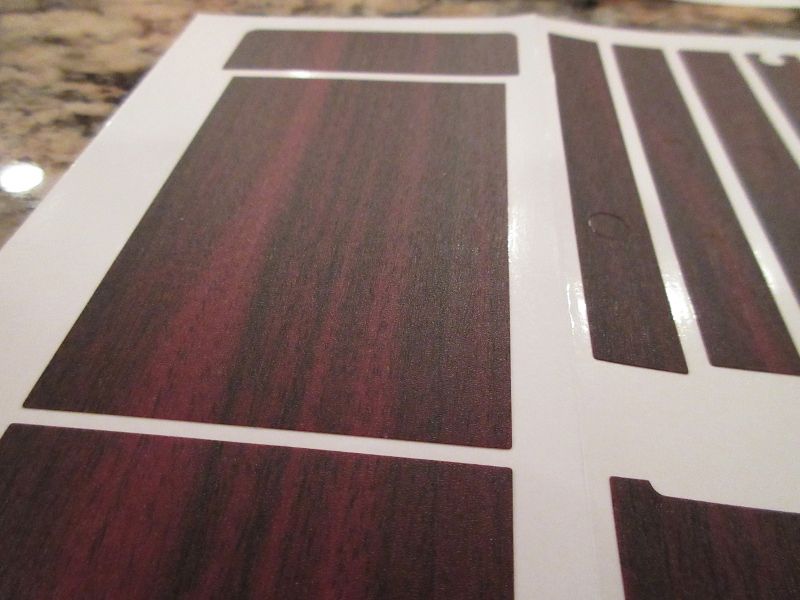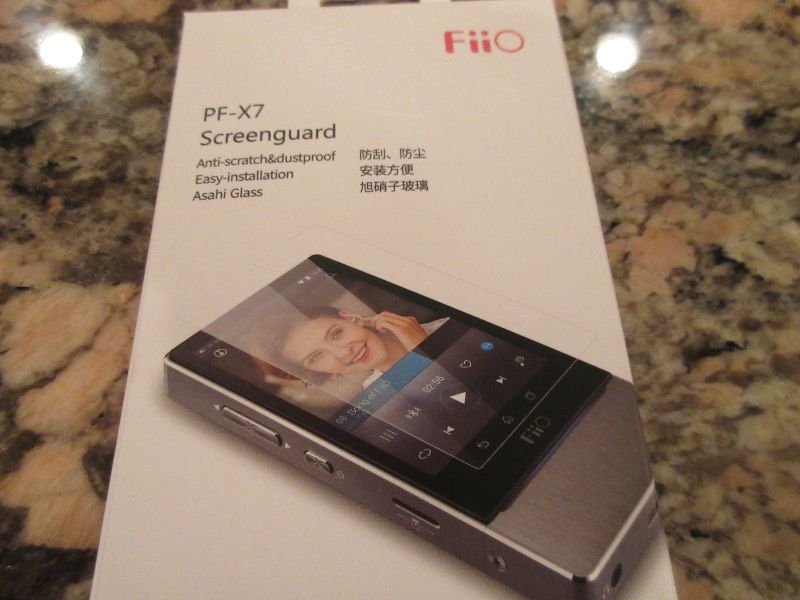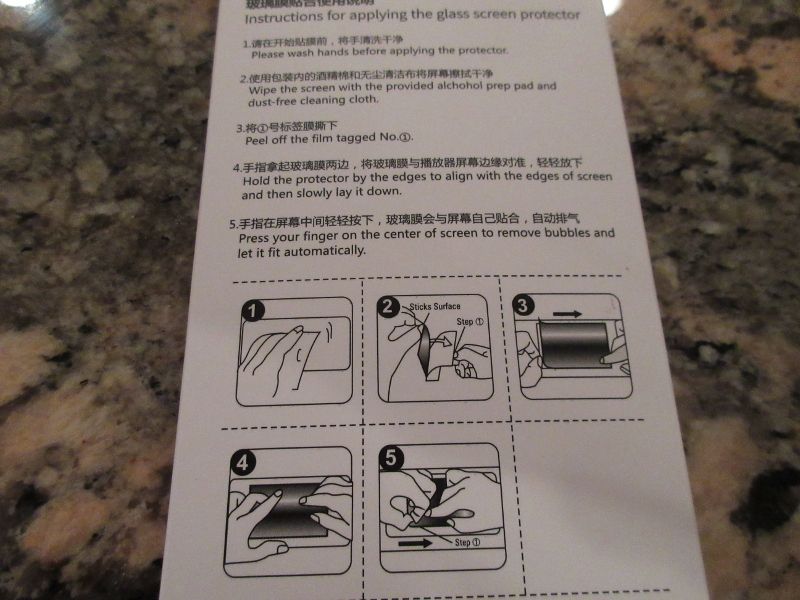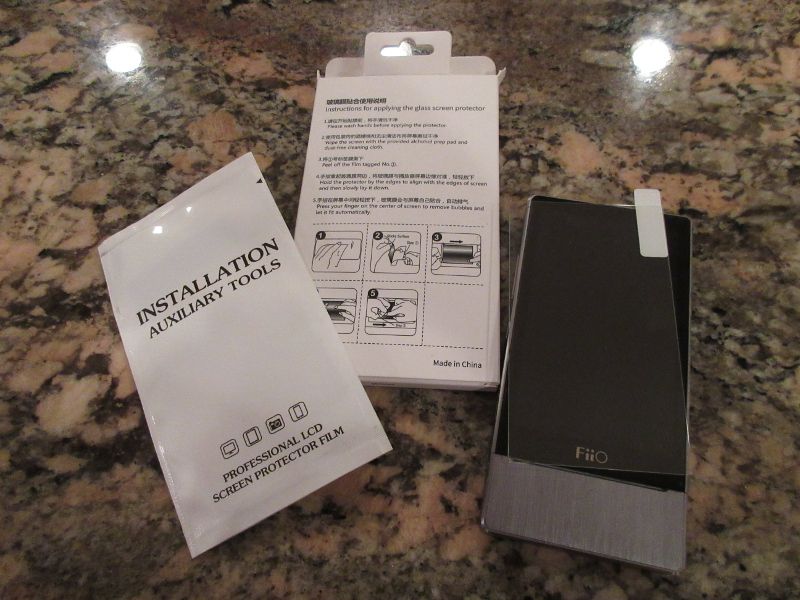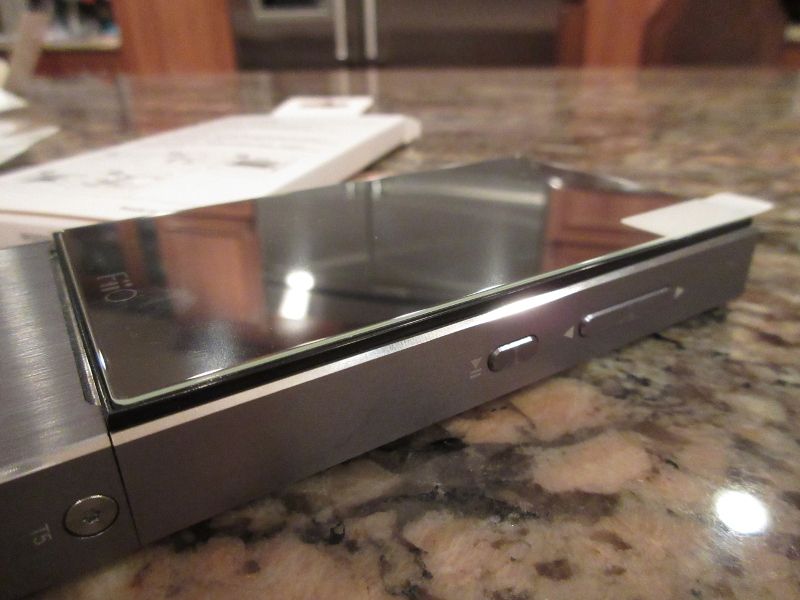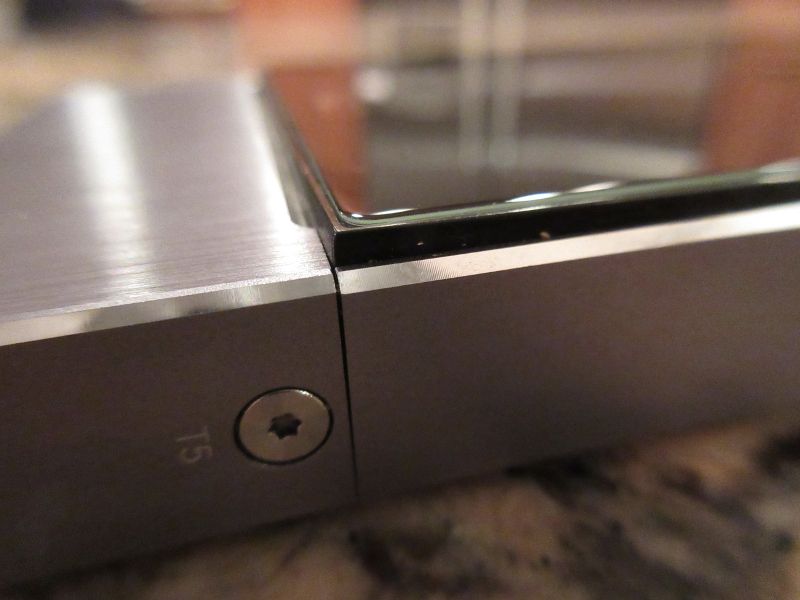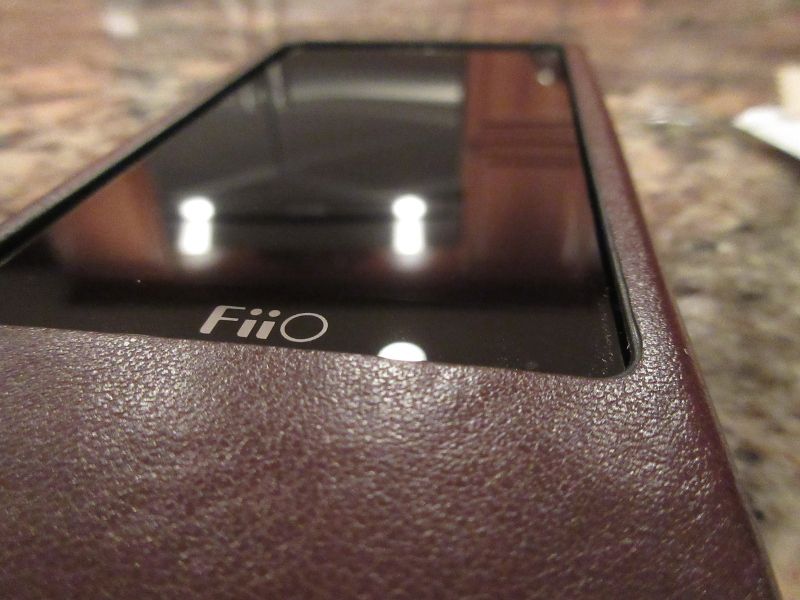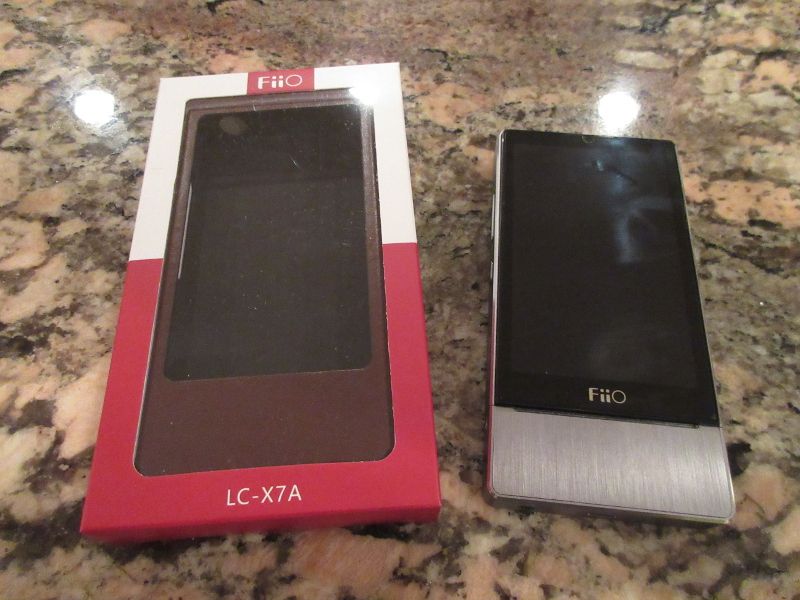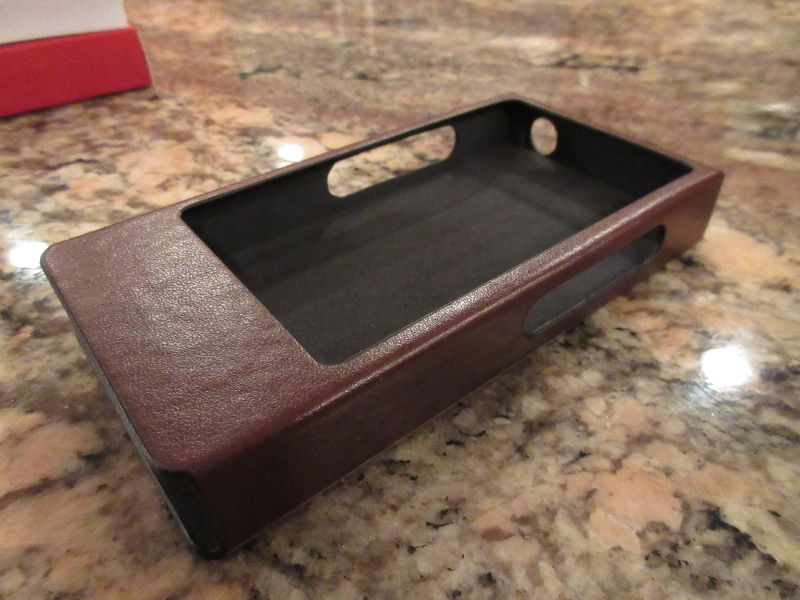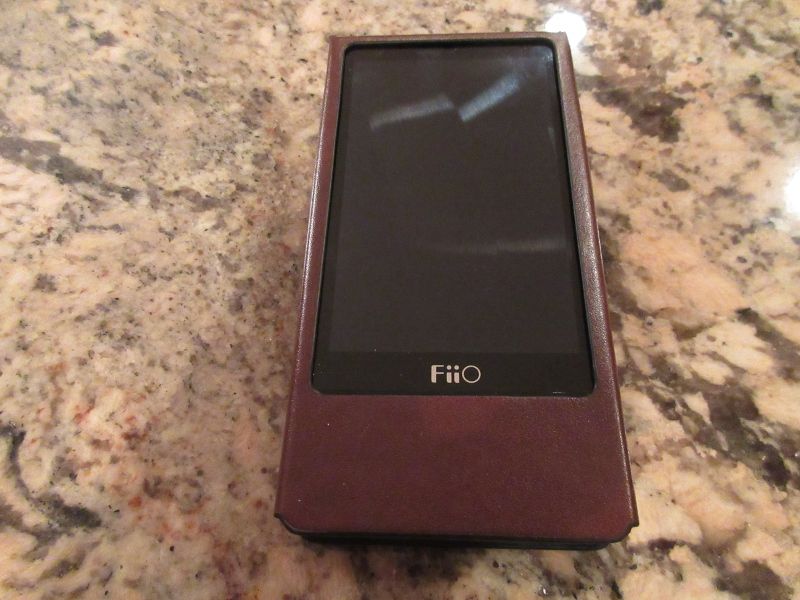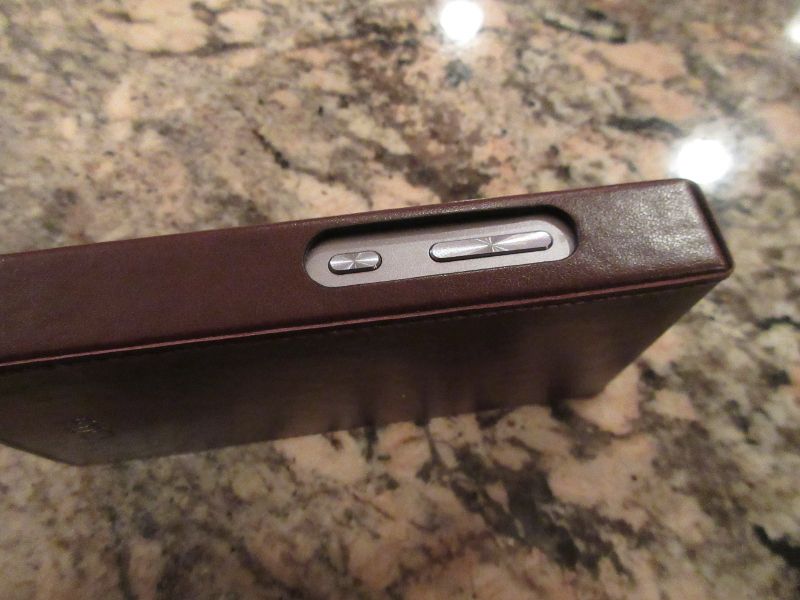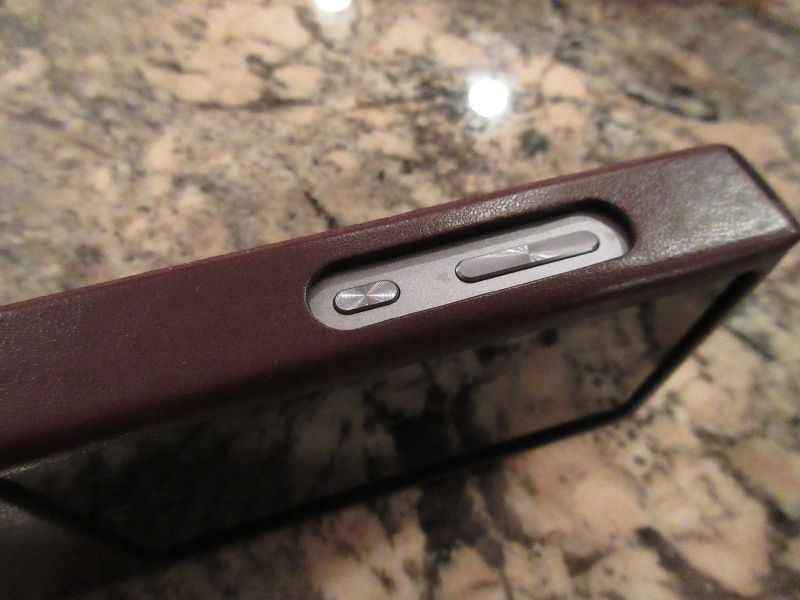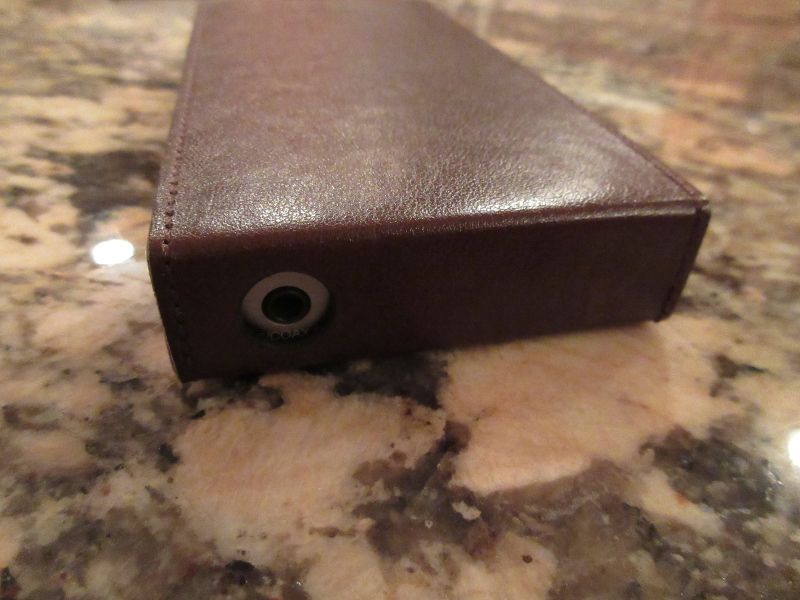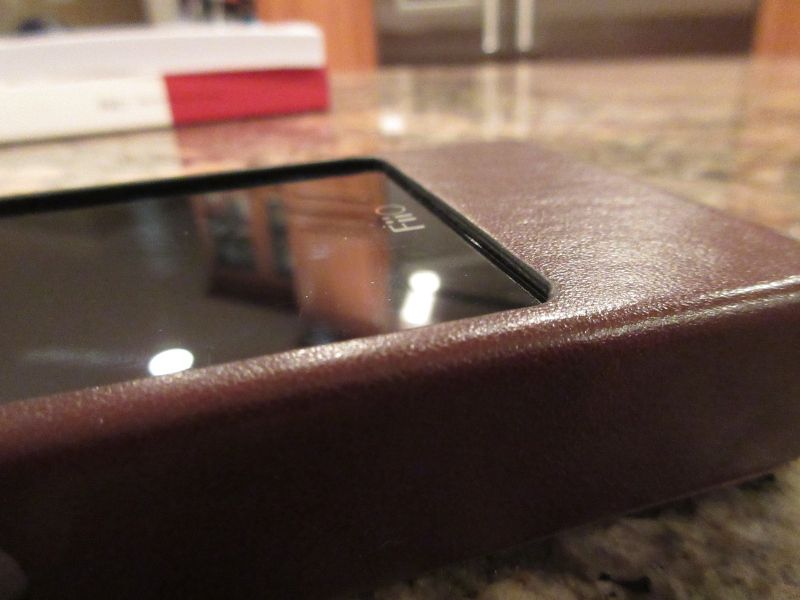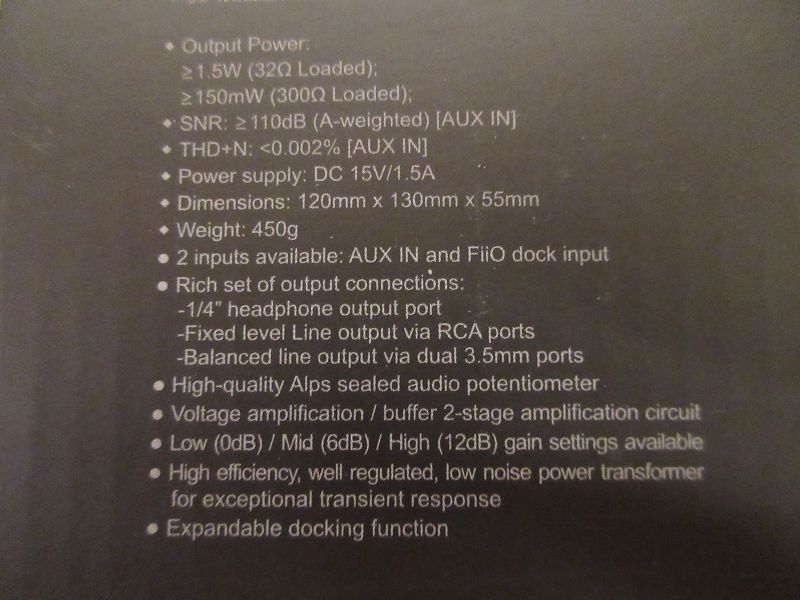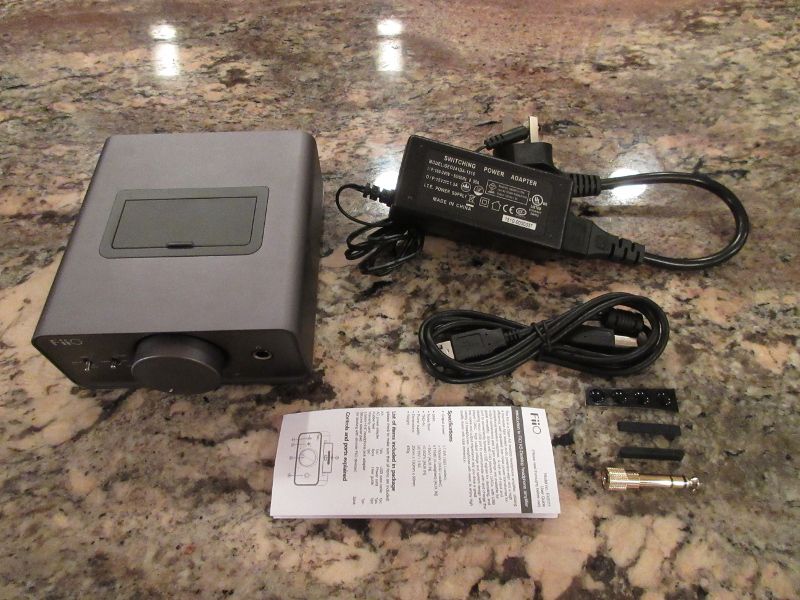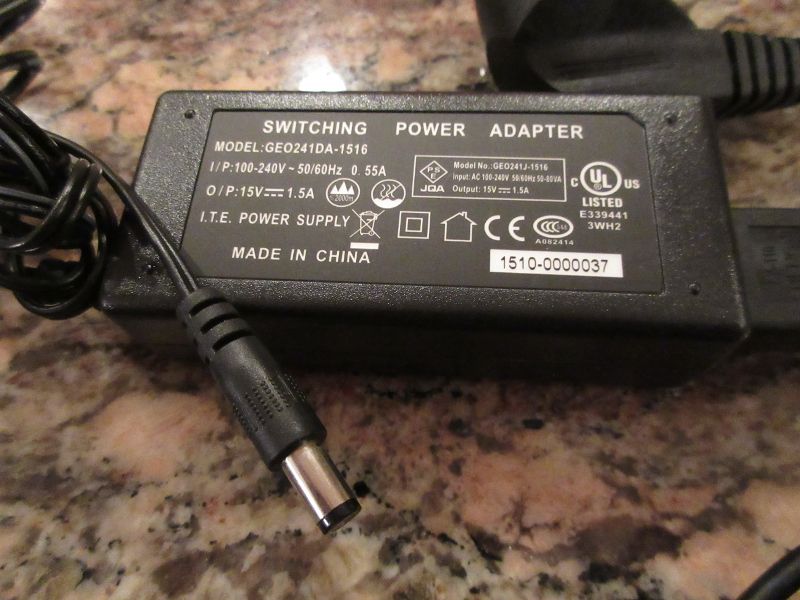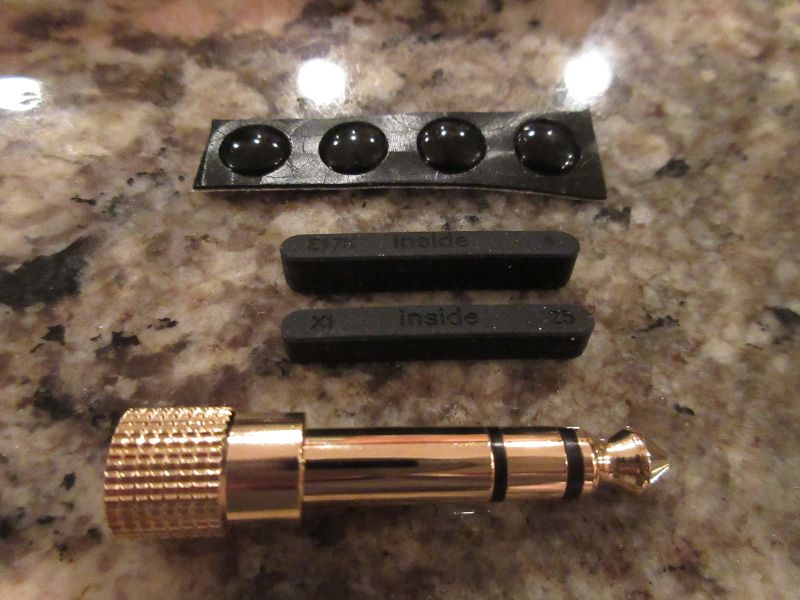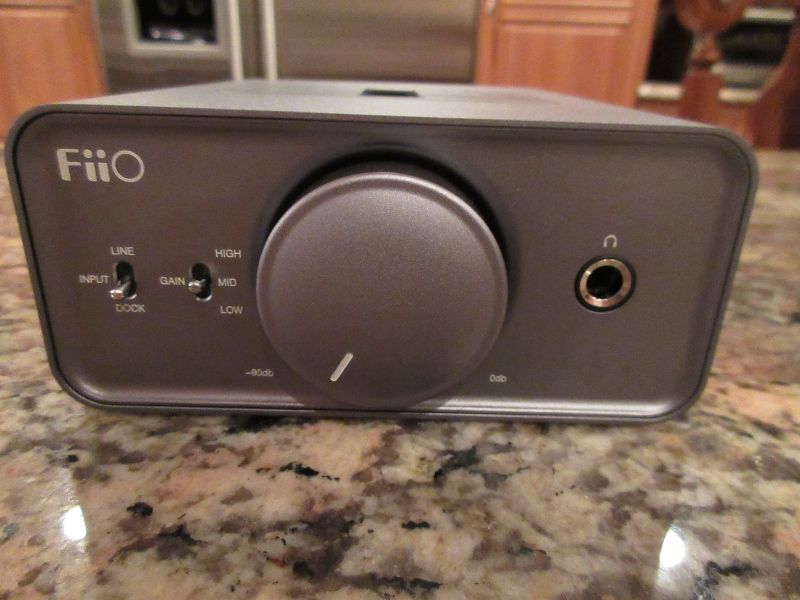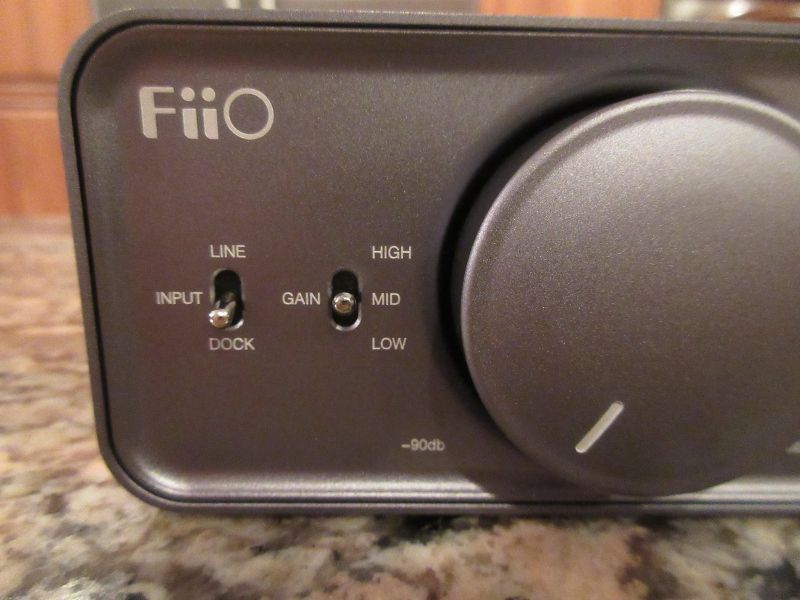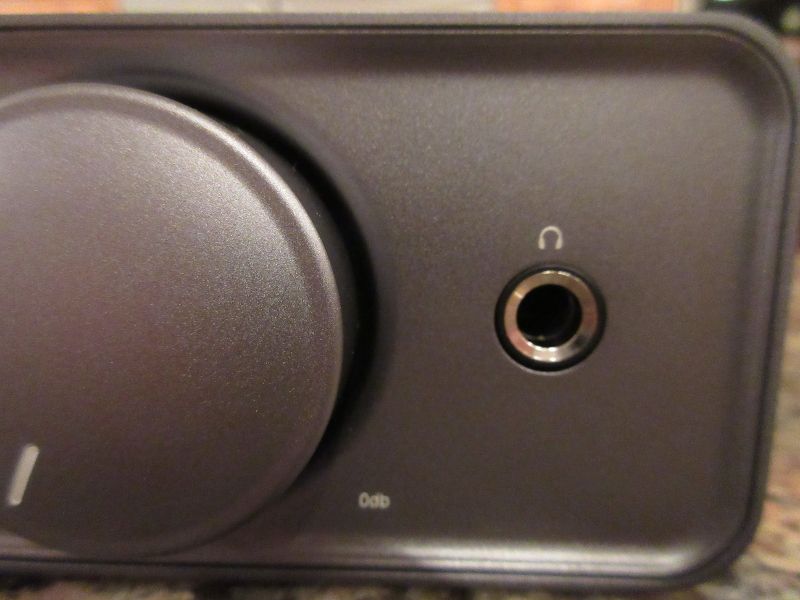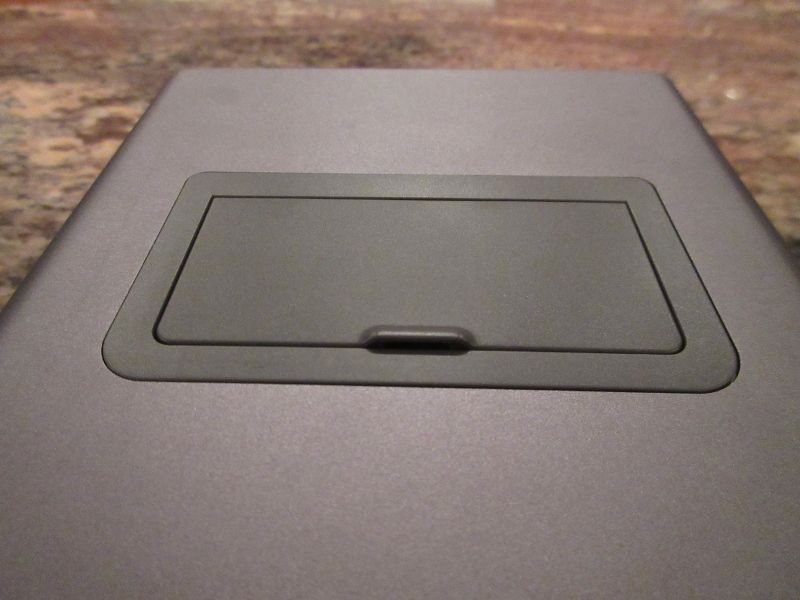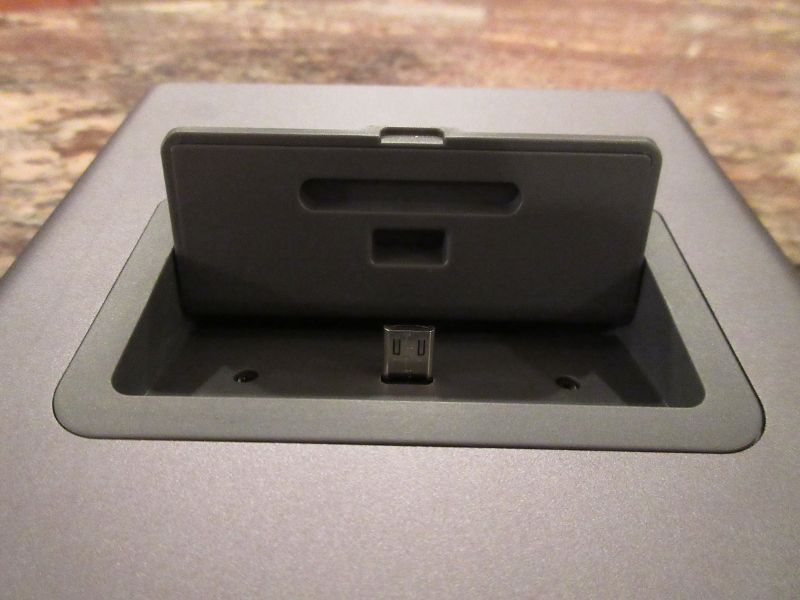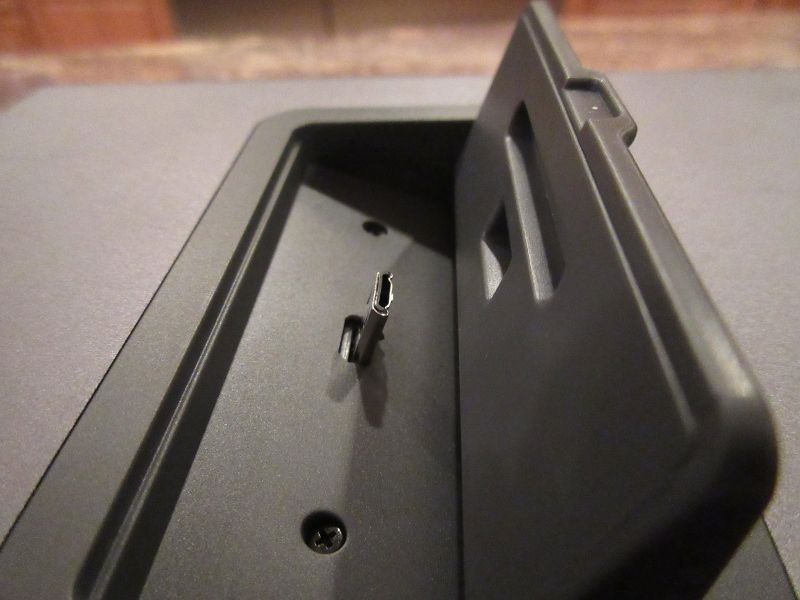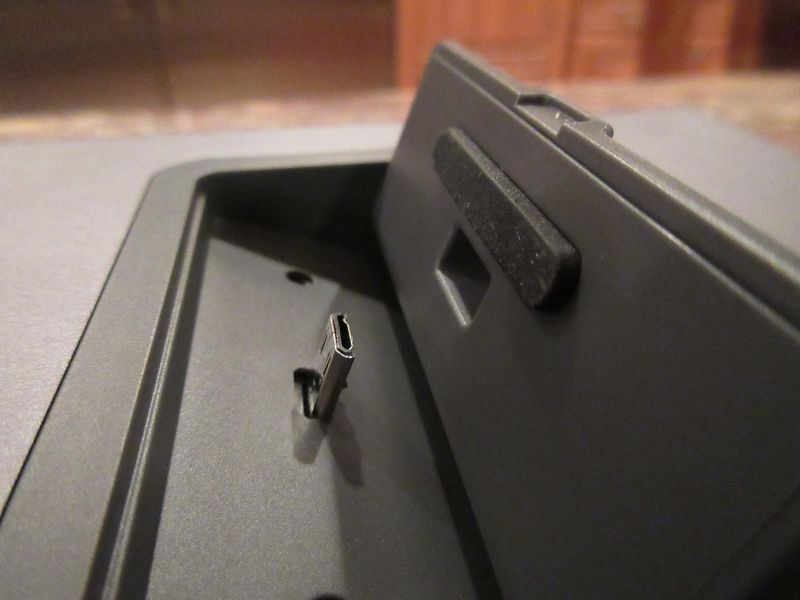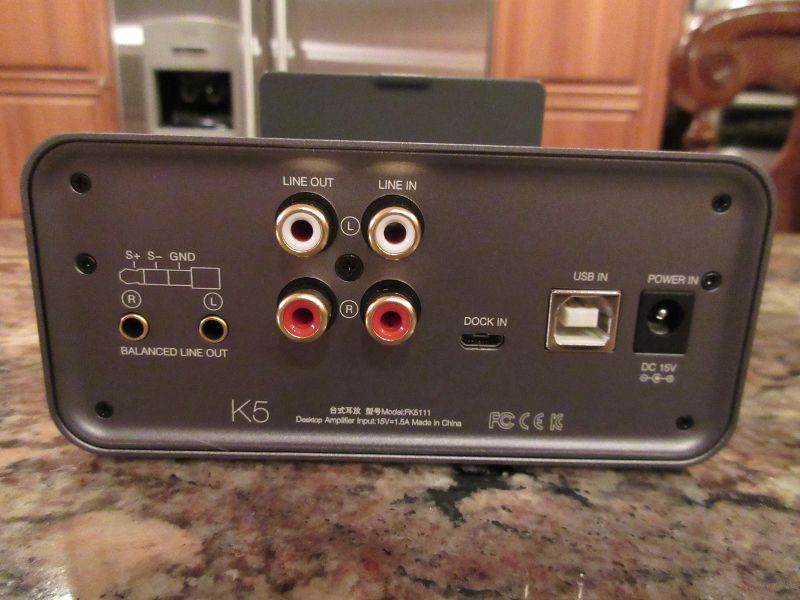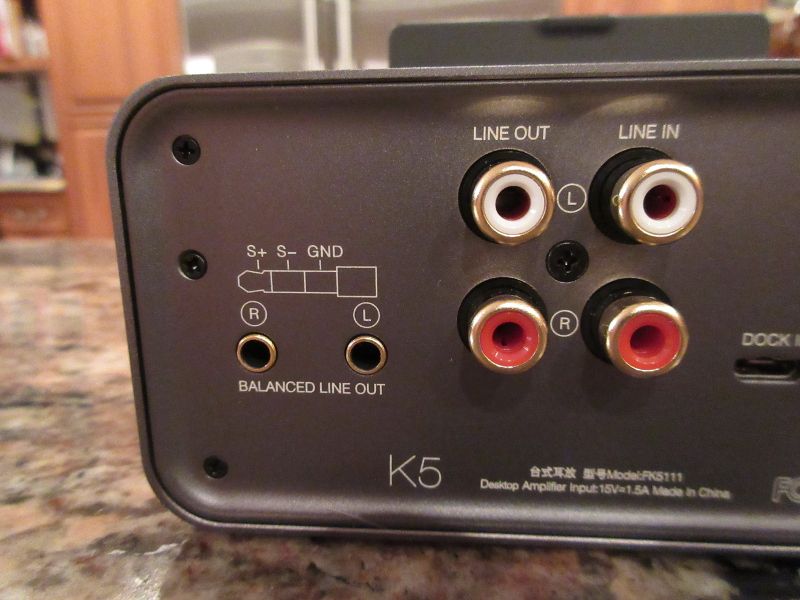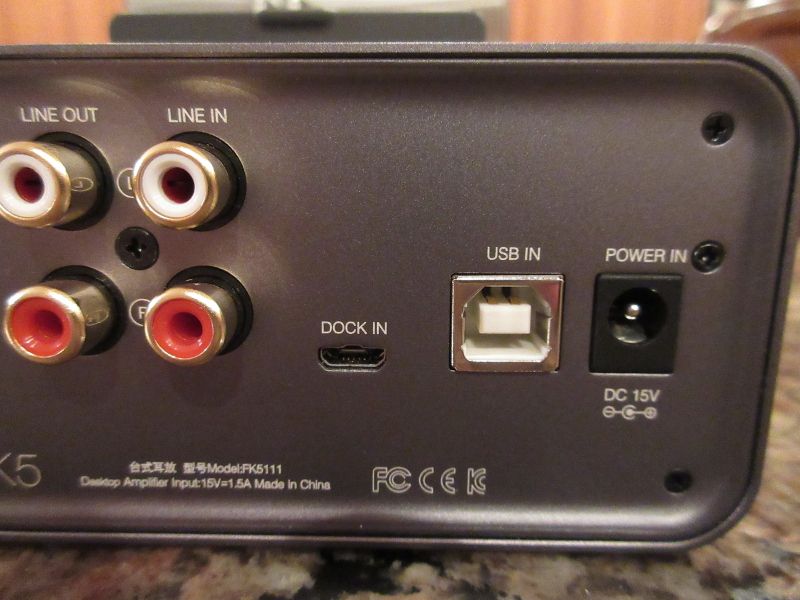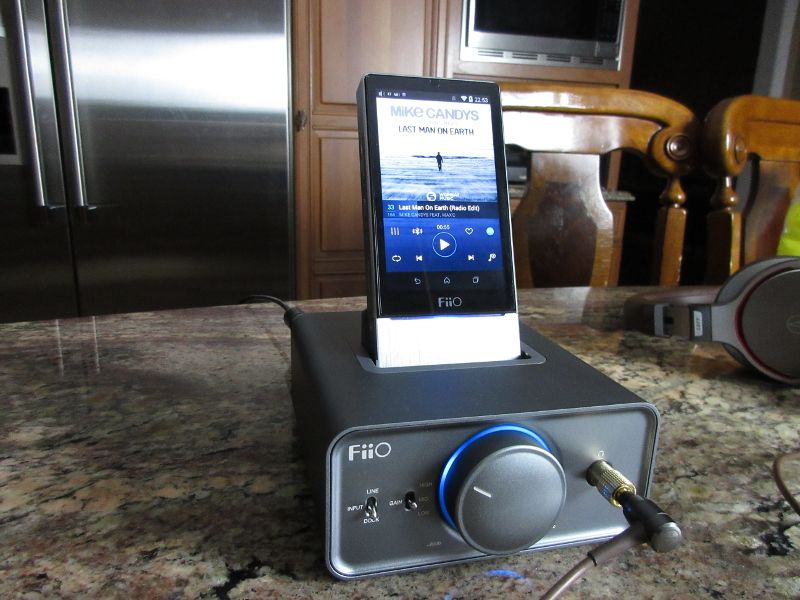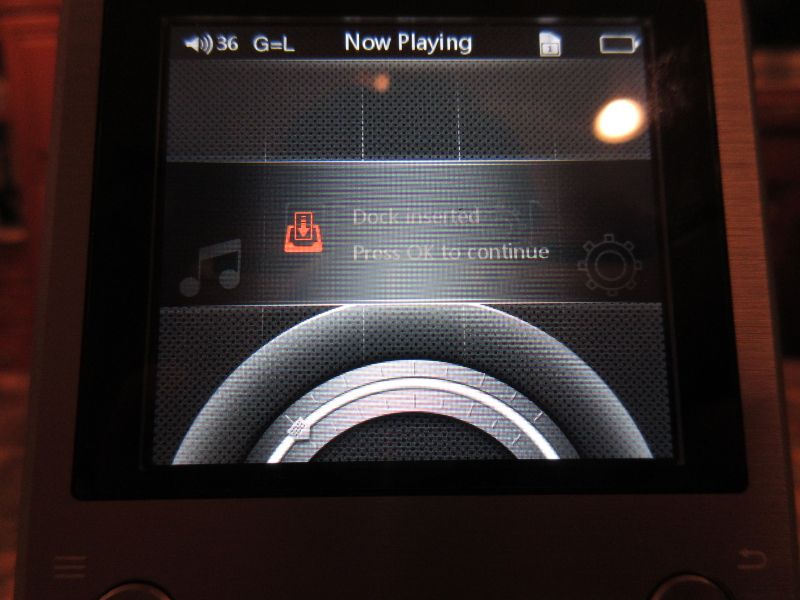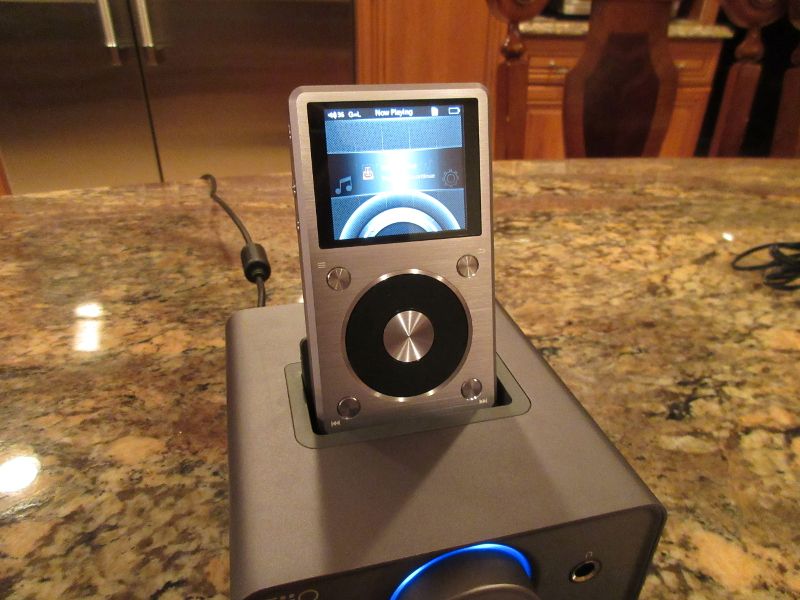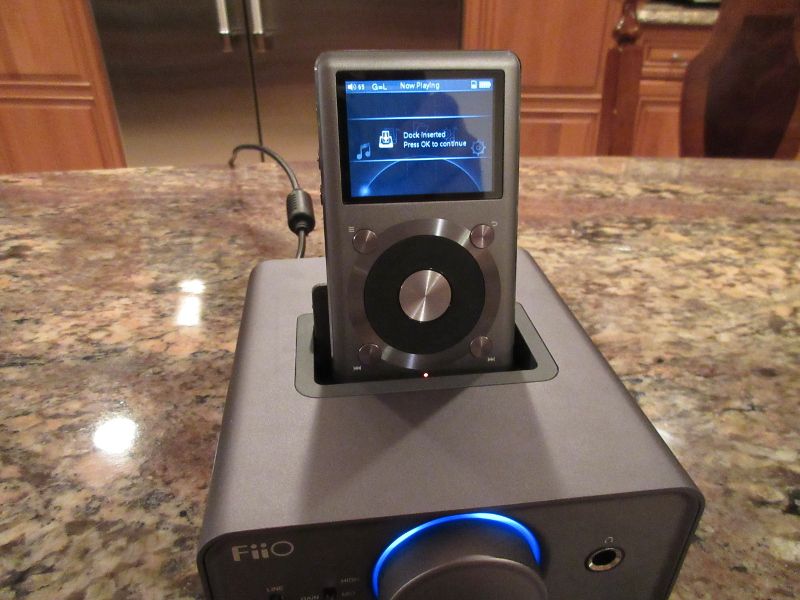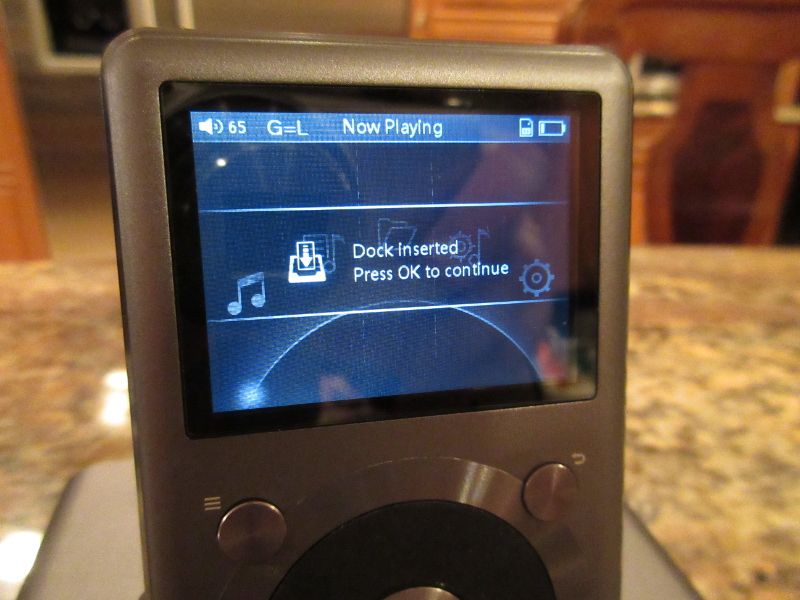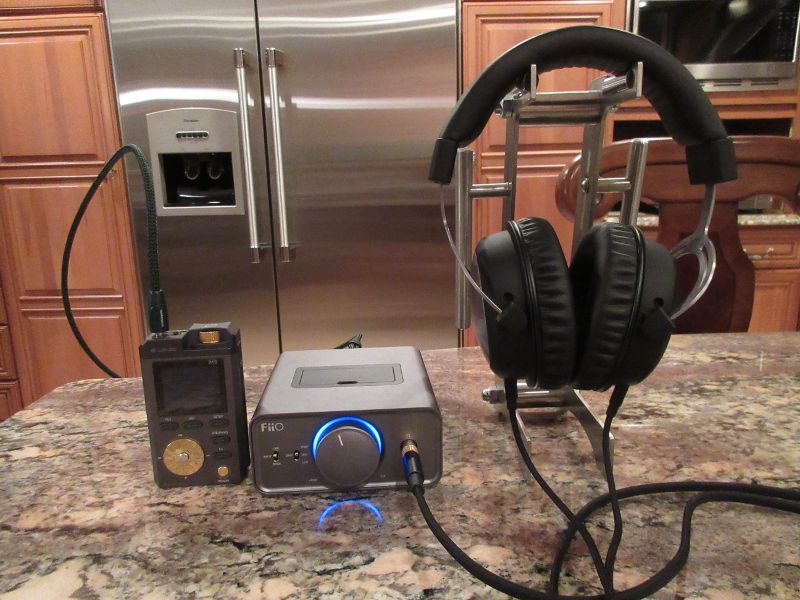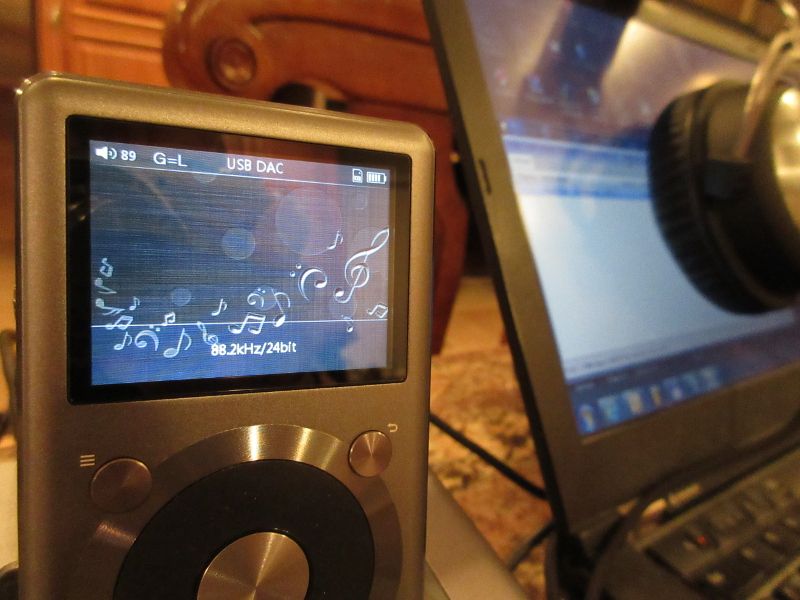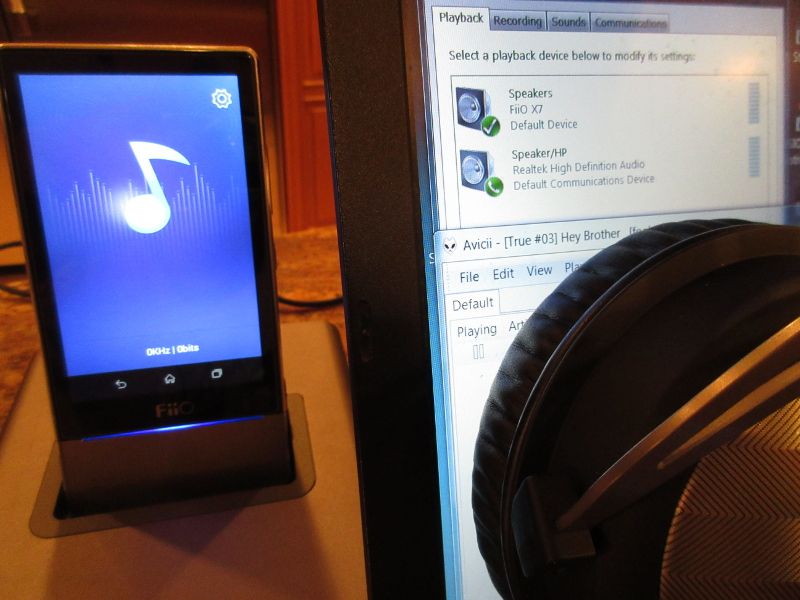twister6
Android Expert
This is a review of Android based FiiO X7 Digital Audio Player (DAP). http://www.fiio.net/en/products/45 , and available on Amazon: http://www.amazon.com/dp/B017SBSOB0/
Looking back at the last few years and the amount of audio players I have reviewed and compared, ranging from $20 to $2k, I still hold the original X5 in high regard because it was my stepping stone into the world of DAPs. Though I skipped their original X3, there was no turning back afterwards with X5, X1, X3ii, and X5ii - all of which I had a privilege to test and to review. While DAP market got saturated with a lot of new releases, I still consider FiiO to be one of the trendsetters pushing the envelope of price/performance ratio, regardless if they are outperforming the competition or being outperformed by the competition.
Going back to the original X5, in my review I compared its performance to a smartphone stack w/E18, and in conclusion mentioned that "... when you are relaxing and enjoying the music, you don't want to be interrupted by email or text message or social media update... smartphone is a jack of all trades, while X5 is a master of one - the music..." The touch screen interface of a smartphone offered a great convenience, but the baggage of everything else it comes with loaded and running in the background was a turn off, not to mention a sub-par sound quality (back when I had my Note 2).
Realizing challenges and benefits of Android based audio player, and considering that FiiO was overdue for flagship summit-fi level DAP, they shifted their design focus to a touchscreen based DAP supercharged with special audio enhancement features to set it apart from a typical smartphone and/or other android based DAPs. The discussion about this DAP has been circulating for a year, with a lot of people waiting in anticipation the release. Now with X7 out in the open, the big question is if it lived up to expectations? Let’s find out!
Unboxing and Accessories.
The unboxing experience of X7 is nothing short of a typical smartphone. You start with a cover picture of the DAP on the packaging sleeve which looks exactly like a smartphone without even a hint of being a dedicated audio player and a display shot of a typical Android screen with audio widget of FiiO Music app. On the back of the box you will find a spec which could also be easily mistaken for a smartphone, except when you come across a support of 384kHz/32bit decoding. Not everybody aware of this, but in Android OS you are facing a Sample Rate Conversion (SRC) limitation which keeps audio downsampled to a common denominator in order to ensure compatibility with different apps. FiiO was able to overcome this limitation which I'm going to discuss later in my review.
With a sleeve cover off, you will be greeted with a sturdy gift box construction and X7 sitting securely inside of a form fitted foam cutout. If you find the cover sleeve picture to be deceiving, looking at X7 in person and holding this 220g touch screen gadget in your hand still won't convince you this is not a smartphone.
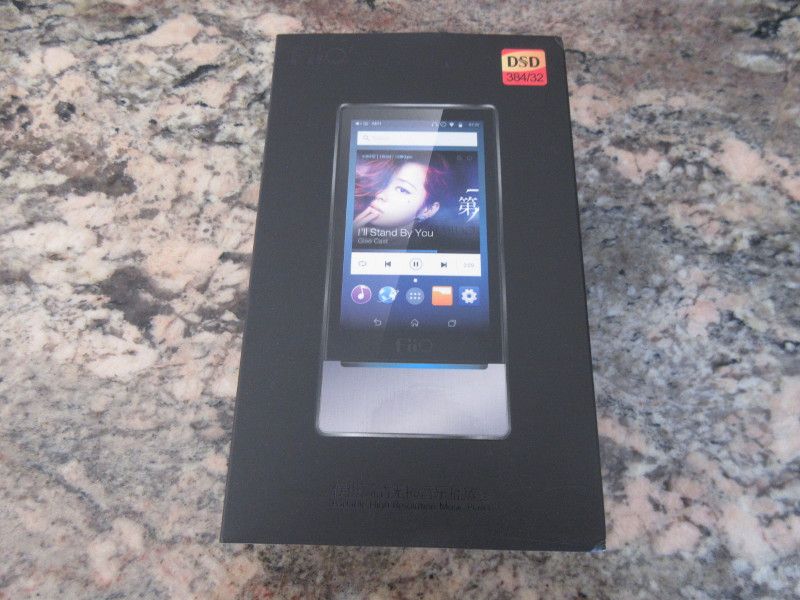
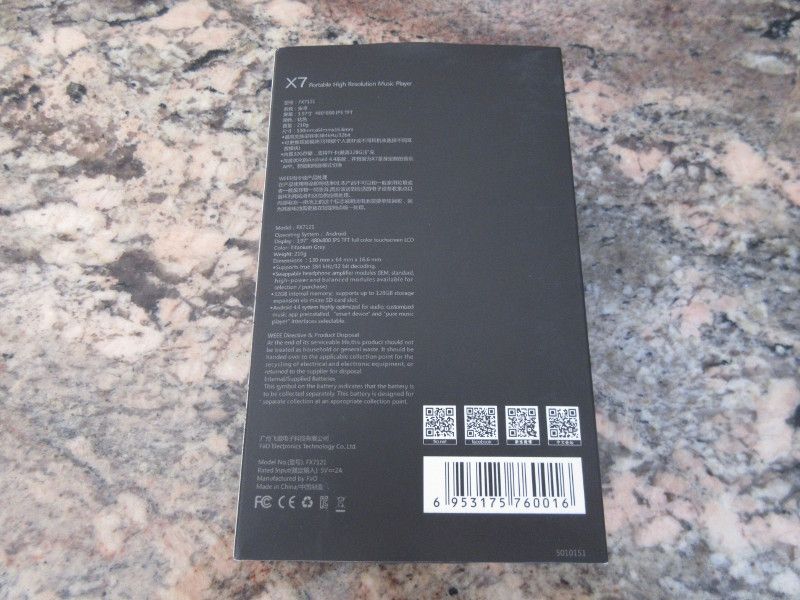
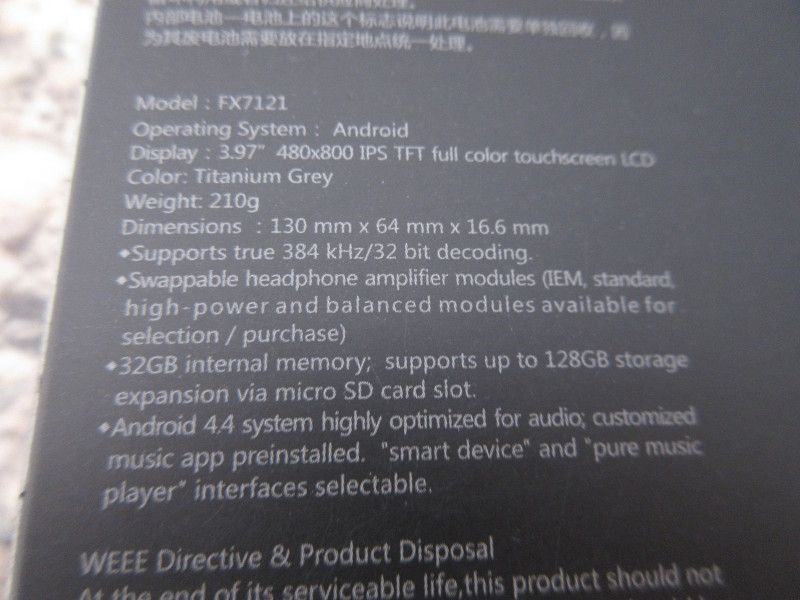
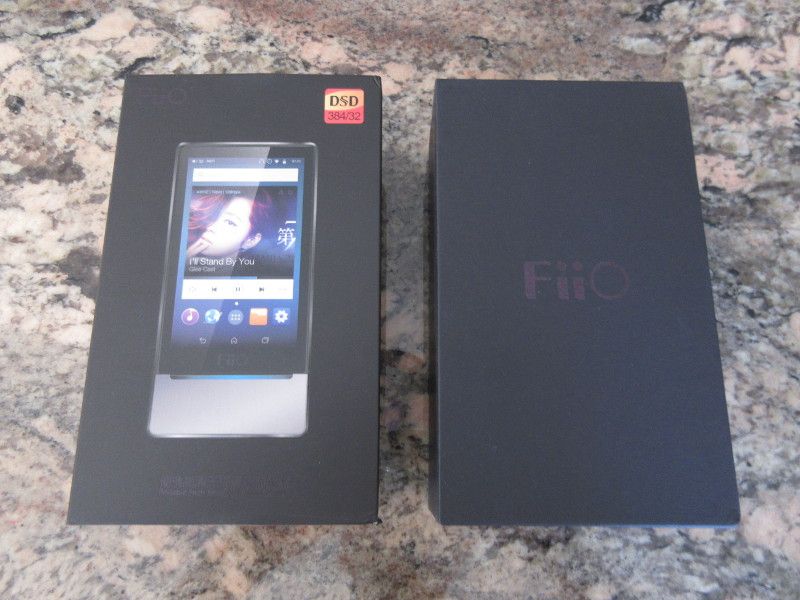
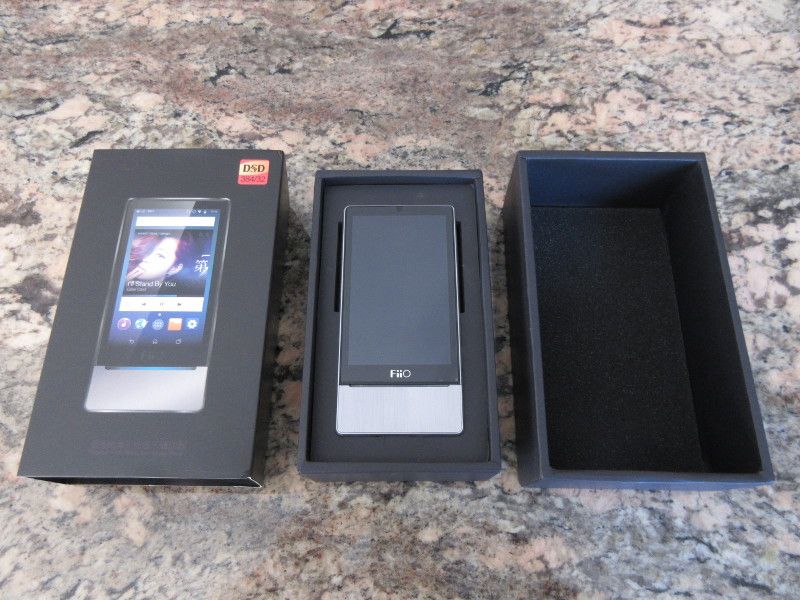
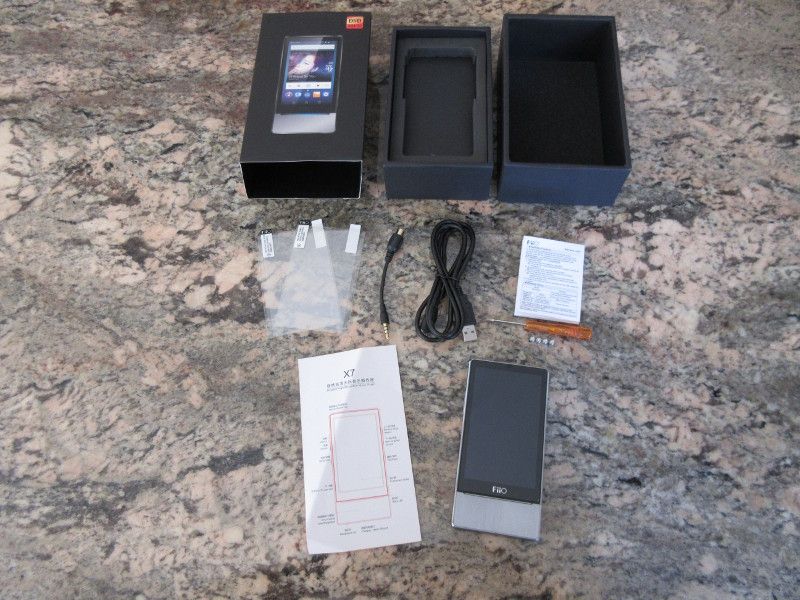
With my X7 being a review unit, I'm not sure if I received all the accessories that going to be bundled with a retail version. Included were 2 sets of screen protectors where the 3rd one was already applied to the display. Keep in mind, screen protector will give you just a minimum protection from scratches. Considering X7 design has a display which is not flush mounted, until you get a proper "smartphone" case with a corner protection and the front lip to keep the screen off the surface - you have to exercise extreme caution handling this DAP.
Also included is a short coaxial cable with 3.5mm TRRS style connector due to a shared LO/Coax port. Furthermore, you will find a quality usb to micro-usb cable for charging/power and data transfer, a quick start guide, and a torx screwdriver w/4 extra torx screws. If you paid close attention to the spec on the back of the packaging box, screwdriver will explain a reference to a swappable headphone amplifier module which is located right below the glowing led light underneath of the display.
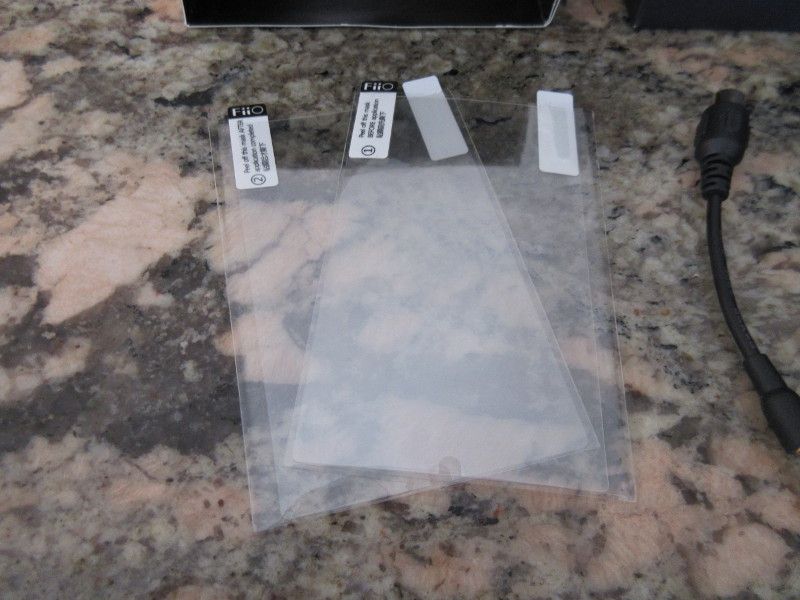
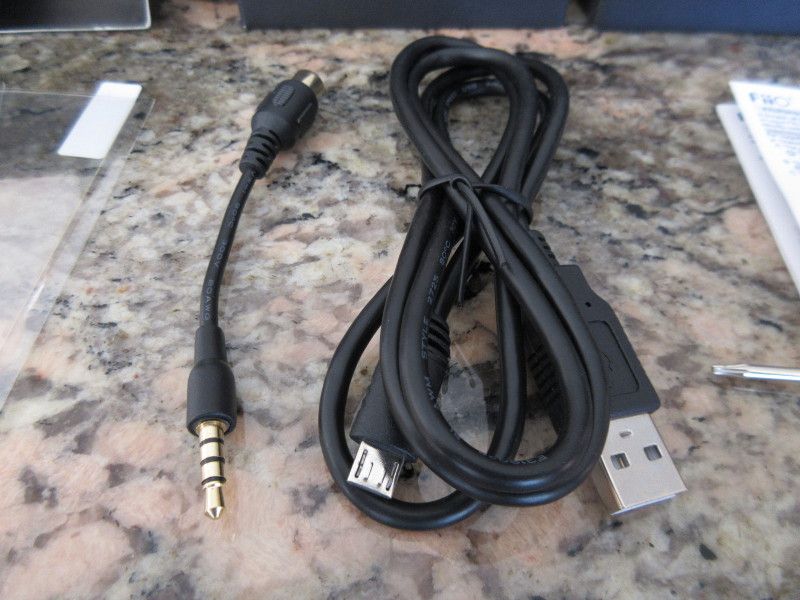

Design.
X7 design is camouflaged to look exactly like a smartphone, with only a few DAP hints when you take a closer look. Just like with any smartphone, the focal point of the design is a touchscreen display, 3.97" IPS (178deg viewing angle) TFT supporting 16.7mil colors with resolution of 480x800 and pixel density of 233 PPI. Is this the highest resolution or the best pixel density or the most accurate color reproduction? Absolutely not, which is quite ok considering the intent of X7 is not for playing video games or watching hi-res movies and videos. 4" touch screen is convenient for one handed operation, the experience I forgot all about after 3+ years of using various Galaxy Note smartphones. I found touchscreen to be adequate for audio application, use of other audio apps, and some occasional browsing. The screen is responsive, though not exactly on the same level as I'm used to with my Galaxy phones.
With dimensions of 130mm (H) x 64mm (W) x 16mm (D), the screen occupies close to edge-to-edge space and about 105mm in height, which leaves 25mm below it for removable amp module. There are 2 torx screws on each side of the module, holding it securely in place with absolutely no wiggle once properly connected. One unique feature of this DAP is a glowing soft blue light, radiating from led in the middle under the screen through a light pipe which dims the glow toward the edges. The light is always on, can't be disabled. I personally like it because it gives me a visual indicator of power being on, but I think it would have been a good idea to provide an option to disable it in order to save battery or if you don’t want a “nightlight”. Also, I would have loved to see it being customized to change colors to indicate low power or when charging.
The bottom of the DAP, where amp module is located, has HO 3.5mm port and a standard micro-usb connector – by default X7 comes with IEM low power module. These ports will vary between different amp modules, depending on functionality. For example, one of the upcoming replacement amp modules should have 2.5mm TRRS balanced port and 4-pin kobiconn balanced connector. With Line Out being common to X7 main frame as part of DAC output, this 3.5mm port (shared with Coax) is accessible from the top of the unit. Left side at the bottom of the frame also hosts micro-SD card slot which supports 128GB card and most likely the latest 200GB. The only other controls you will find on X7 are 6 buttons, placed symmetrically in groups of three on each side.
By default, on the right side you have transport control with a separate Play/Pause button and double buttons for Skip/Next/Fwd and Skip/Prev/Rev functionality. In the opposite spot symmetrically on the left side with an exactly the same look and feel, you have Power on/off button and double buttons for Volume up/down. The whole idea of such design was to be able to accommodate left/right handed operation where you can map Power/Volume and Play/Skip functionality to either side. I do appreciate the thought behind it and find it quite clever, but personally after a month of playing with X7 I still find it a bit inconvenient. Perhaps I got spoiled by DAPs with dedicated analog volume knob, or used to other DAPs where volume/power is on one side and transport controls are part of multi-function front/side buttons, but I'm not too crazy about this symmetrical button arrangement. Part of the problem is that X7 is a bit on a heavy side, and without a protective case I feel like its slick body, CNC machined out of a solid block of 6061 aluminum (polished, sandblasted, brushed, and color anodized), will slip out of my hand. As a result, my grip usually tighter around the sides, and when pushing the volume sometime I press a track skip button on the opposite side of X7, or turning the screen on with a power button sometime triggers me pressing play/pause on the opposite side. Is this a showstopper? Not really if you get a quality case with buttons that take a little more effort to press (even recessed cutout for buttons should work).
Overall, exterior design is smartphone vanilla-plain which I find polarizing. Without any extra knobs and a uniform bar shape this is a very slick and comfortable unit to handle, to pocket, and to operate with one hand. But it loses personality of a flagship status by looking plain and "boring". I don't mind a bulge on the back (extra space for the battery), and the resulting slimmer part toward the top which makes a nice resting spot for my index finger. It also enhances the grip and helps to id front/back of X7 when in my pocket. But the screen sitting on top of the X7 body exposes the edges of the glass, making it vulnerable to break/chip if you drop it. The protective case is definitely a must for X7, and creating one could be a challenge to keep the design slim while still providing an adequate protection.
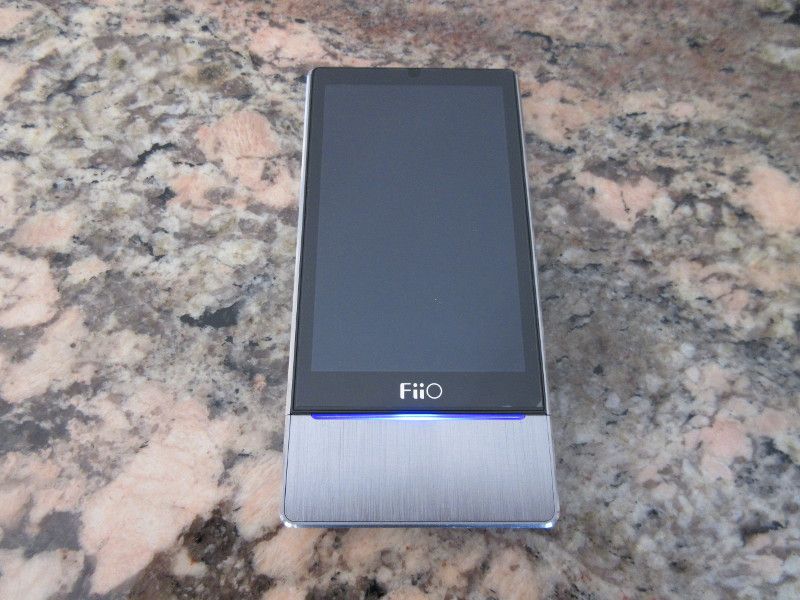
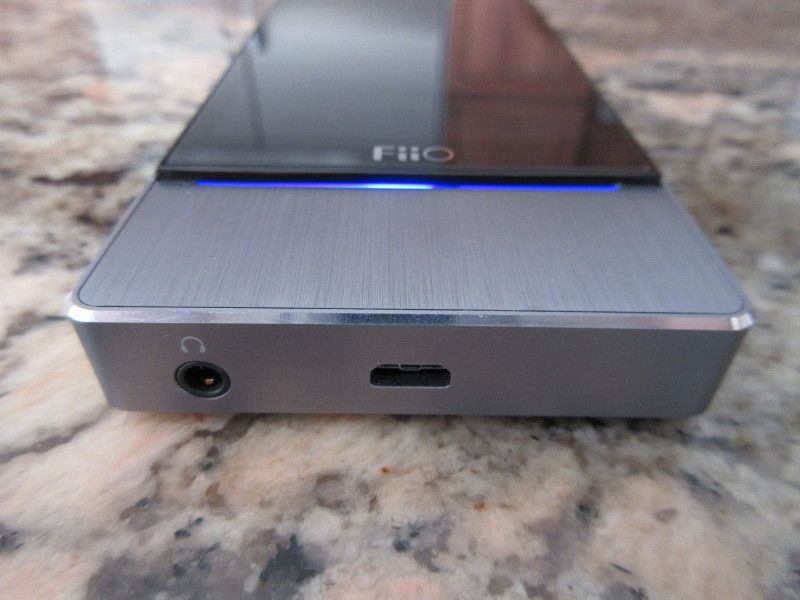

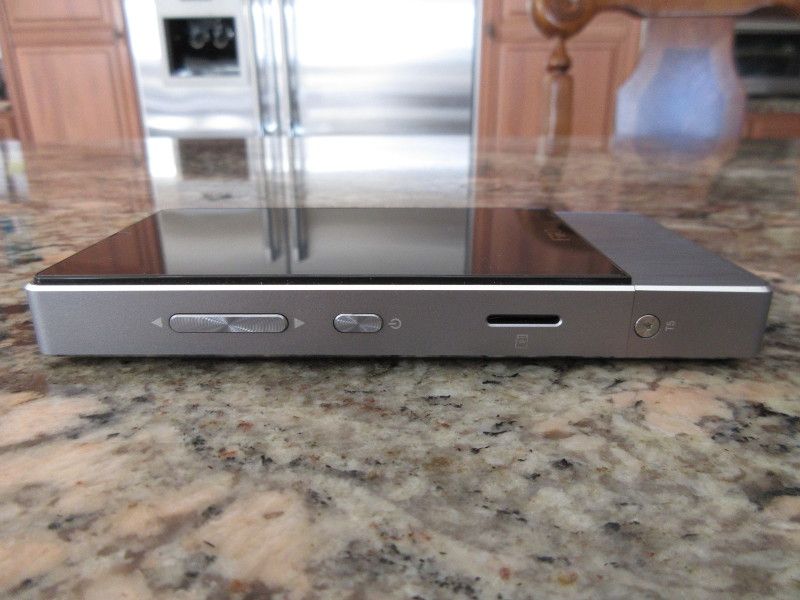

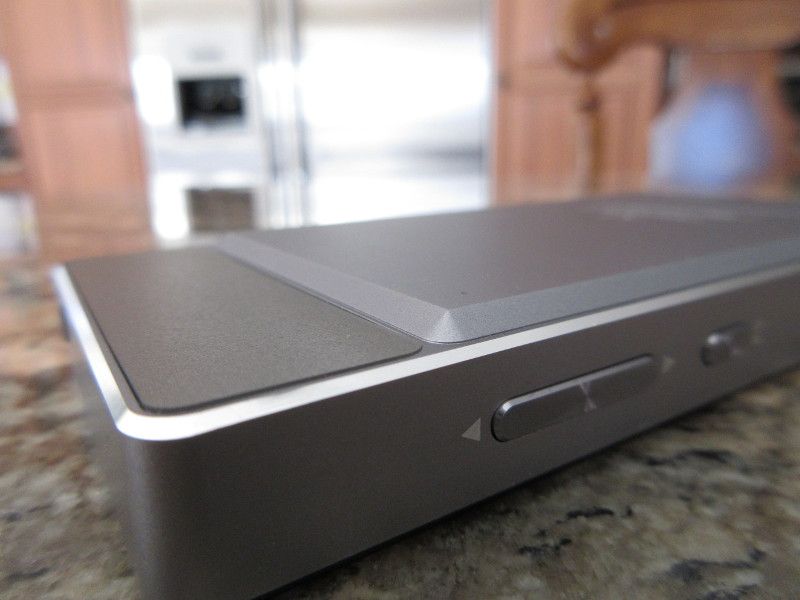
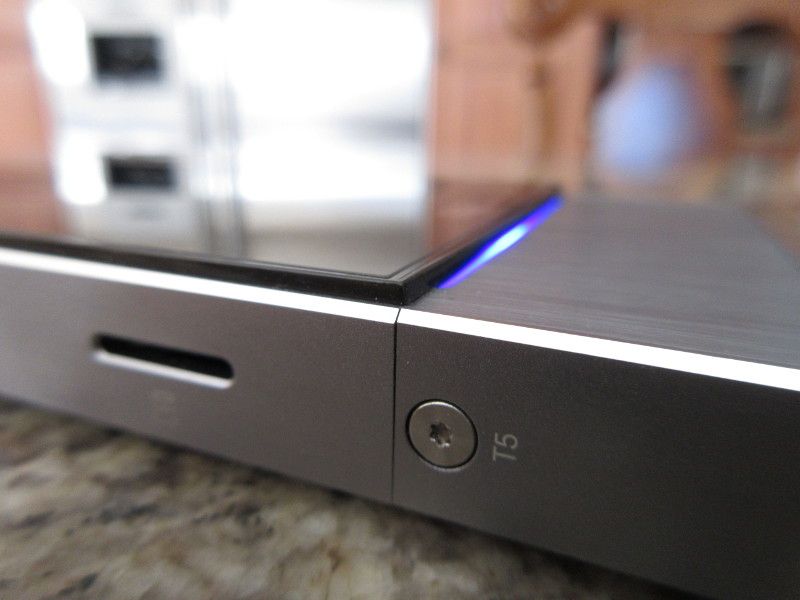
Under the hood.
If this would have been a smartphone, a processor would be the crown of the design to go against the competition. But since we are dealing with an audio DAP, all eyes are on the DAC selection. Here FiiO decided to pull out all the stops and go for a knock out with TOTL desktop quality ESS 9018 8-channel DAC with channels bridged 4-a-side for the highest dynamic range. Also, a "classic" OPA1612 buffer was used. I don't know exactly the guts of IEM amp module, but it's speced at >100mW (32 ohm load) with output impedance of less than 0.5 ohm. Don't jump into conclusion about the power and max headphone impedance it can drive until you read my sound analysis further in the review.
When it comes to the actual processor, FiiO selected Rockchip RK3188T SoC with quad-core Cortex A9 and 1GB of LPDDR3 RAM (w/1.4GHz clock speed, reduced from the original RK3188 w/1.6GHz), and also 32GB of internal memory in addition to microSD expansion. This SoC is not sufficient enough for playing cpu intense games or watching high def videos (as a matter of fact, I noticed on YT sometime colors get messed up). It’s typically used in a budget tablets and Android TV boxes where you don't need to support integrated cellular radio basebands. It ensures a low power consumption to maximize battery life. And speaking of that, the battery is non-replaceable and with a capacity of 3500 mAh, which I have tested to provide about 8-8.5hrs of playback time with screen off. For a standby time, it all depends on which mode you are in. In a regular Android mode you can last a day due to all system processes running in the background. When booting up X7 in a Pure Music mode, I found X7 to idle for over 2 days.
Also, typical for Android based system, you have a support of 802.11 b/g/n wireless connection and Bluetooth v4.0. WiFi support is a huge plus enabling wireless internet connection so you can stream audio from on-line services in addition to being able to access the internet. But I'm not too happy that aptX codec support is not available. With some of the advanced wireless speakers that utilize its own decoding and DSP/DAC processing this is irrelevant, like in case of B&W Zeppelin Wireless I recently tested. But with a number of other wireless headphones supporting aptX codec, there was a level of improvement comparing my Note 4 (BT4.0 w/aptX) vs X7 (BT4.0 w/o aptX). But nevertheless, I was more than happy to use X7 as a source to drive my BT wireless devices without a need to drain my smartphone battery. Also, X7 BT wireless performance is much better than AK120ii where signal strength is rather poor.
With so much electronics under the hood and a support of WiFi/BT, naturally you might be wondering if X7 is prone to EMI or any other related interference. I tested it sandwiched between our smartphones and next to the tablet - no interference causing problems with audio was detected.
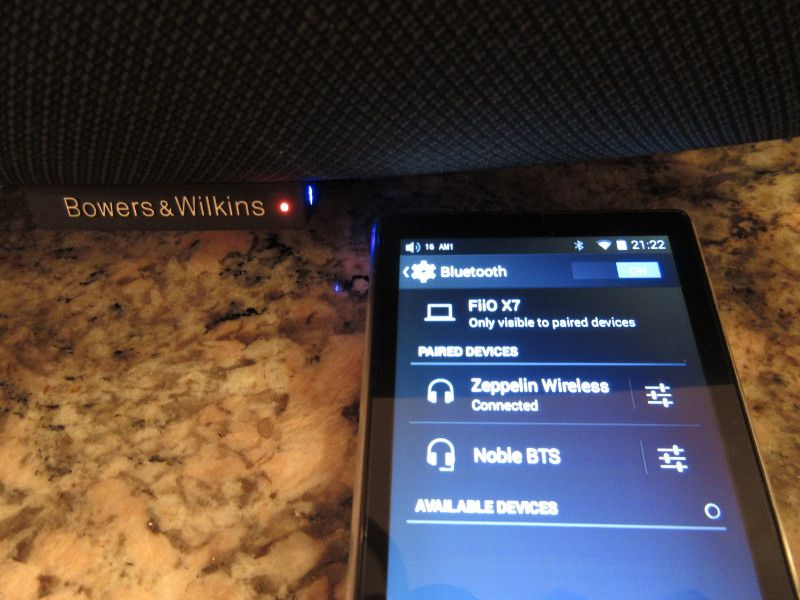
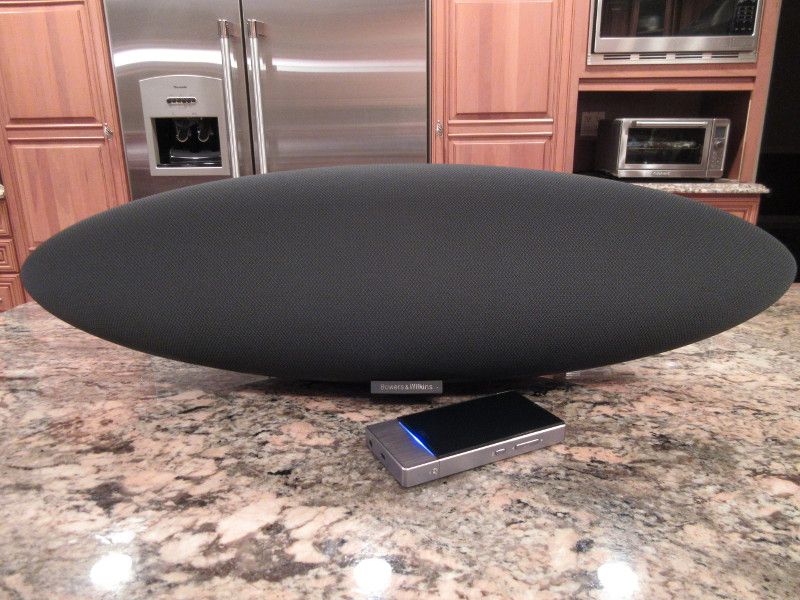
Amp modules.
To wrap up hardware overview, next I would like to talk about replaceable amp modules. The design architecture of X7 allows you to replace the amp module based on your power requirements and wiring needs. By default it comes with IEM module, a single 3.5mm TRS connection with low power output designed to drive efficient headphones and sensitive IEMs, though in my pair up test I found X7 to be capable of driving some higher impedance and planar magnetic headphones without a problem. Amp module plugs into the main frame of the DAP and gets secured by two torx screws on the sides. Attached together it feels like one solid unit. Also, apparently this module should be plug'n'play where I was able to power up X7 without amp module being attached. I wouldn't recommend doing that because it will expose the connector and you can short contacts.
Other optional amp modules will be available to buy separately, and FiiO promises they will be reasonably priced. In addition to IEM module, FiiO going to make available Standard, High-Power, and Balanced (2.5mm TRRS and 4-pin kobiccon) modules. There is also a talk about releasing connector spec and making housing available for 3rd party amp modules. In my opinion, this is a much better idea than the one implemented in HiFiMAN HM901 with replacement amp cards. At the same time, it becomes inconvenient where you have to physically swap modules when you are switching between different headphones. It makes sense with efficient vs demanding (high impedance, low sensitivity) headphones, but for many who use IEMs/CIEMs with either standard or balanced cables - this will be a headache. Personally, I would have loved to see a universal amp module based on the currently planned balanced module with an addition of 3.5mm TRS connection and maybe a hardware high/low gain switch.


Looking back at the last few years and the amount of audio players I have reviewed and compared, ranging from $20 to $2k, I still hold the original X5 in high regard because it was my stepping stone into the world of DAPs. Though I skipped their original X3, there was no turning back afterwards with X5, X1, X3ii, and X5ii - all of which I had a privilege to test and to review. While DAP market got saturated with a lot of new releases, I still consider FiiO to be one of the trendsetters pushing the envelope of price/performance ratio, regardless if they are outperforming the competition or being outperformed by the competition.
Going back to the original X5, in my review I compared its performance to a smartphone stack w/E18, and in conclusion mentioned that "... when you are relaxing and enjoying the music, you don't want to be interrupted by email or text message or social media update... smartphone is a jack of all trades, while X5 is a master of one - the music..." The touch screen interface of a smartphone offered a great convenience, but the baggage of everything else it comes with loaded and running in the background was a turn off, not to mention a sub-par sound quality (back when I had my Note 2).
Realizing challenges and benefits of Android based audio player, and considering that FiiO was overdue for flagship summit-fi level DAP, they shifted their design focus to a touchscreen based DAP supercharged with special audio enhancement features to set it apart from a typical smartphone and/or other android based DAPs. The discussion about this DAP has been circulating for a year, with a lot of people waiting in anticipation the release. Now with X7 out in the open, the big question is if it lived up to expectations? Let’s find out!
Unboxing and Accessories.
The unboxing experience of X7 is nothing short of a typical smartphone. You start with a cover picture of the DAP on the packaging sleeve which looks exactly like a smartphone without even a hint of being a dedicated audio player and a display shot of a typical Android screen with audio widget of FiiO Music app. On the back of the box you will find a spec which could also be easily mistaken for a smartphone, except when you come across a support of 384kHz/32bit decoding. Not everybody aware of this, but in Android OS you are facing a Sample Rate Conversion (SRC) limitation which keeps audio downsampled to a common denominator in order to ensure compatibility with different apps. FiiO was able to overcome this limitation which I'm going to discuss later in my review.
With a sleeve cover off, you will be greeted with a sturdy gift box construction and X7 sitting securely inside of a form fitted foam cutout. If you find the cover sleeve picture to be deceiving, looking at X7 in person and holding this 220g touch screen gadget in your hand still won't convince you this is not a smartphone.






With my X7 being a review unit, I'm not sure if I received all the accessories that going to be bundled with a retail version. Included were 2 sets of screen protectors where the 3rd one was already applied to the display. Keep in mind, screen protector will give you just a minimum protection from scratches. Considering X7 design has a display which is not flush mounted, until you get a proper "smartphone" case with a corner protection and the front lip to keep the screen off the surface - you have to exercise extreme caution handling this DAP.
Also included is a short coaxial cable with 3.5mm TRRS style connector due to a shared LO/Coax port. Furthermore, you will find a quality usb to micro-usb cable for charging/power and data transfer, a quick start guide, and a torx screwdriver w/4 extra torx screws. If you paid close attention to the spec on the back of the packaging box, screwdriver will explain a reference to a swappable headphone amplifier module which is located right below the glowing led light underneath of the display.



Design.
X7 design is camouflaged to look exactly like a smartphone, with only a few DAP hints when you take a closer look. Just like with any smartphone, the focal point of the design is a touchscreen display, 3.97" IPS (178deg viewing angle) TFT supporting 16.7mil colors with resolution of 480x800 and pixel density of 233 PPI. Is this the highest resolution or the best pixel density or the most accurate color reproduction? Absolutely not, which is quite ok considering the intent of X7 is not for playing video games or watching hi-res movies and videos. 4" touch screen is convenient for one handed operation, the experience I forgot all about after 3+ years of using various Galaxy Note smartphones. I found touchscreen to be adequate for audio application, use of other audio apps, and some occasional browsing. The screen is responsive, though not exactly on the same level as I'm used to with my Galaxy phones.
With dimensions of 130mm (H) x 64mm (W) x 16mm (D), the screen occupies close to edge-to-edge space and about 105mm in height, which leaves 25mm below it for removable amp module. There are 2 torx screws on each side of the module, holding it securely in place with absolutely no wiggle once properly connected. One unique feature of this DAP is a glowing soft blue light, radiating from led in the middle under the screen through a light pipe which dims the glow toward the edges. The light is always on, can't be disabled. I personally like it because it gives me a visual indicator of power being on, but I think it would have been a good idea to provide an option to disable it in order to save battery or if you don’t want a “nightlight”. Also, I would have loved to see it being customized to change colors to indicate low power or when charging.
The bottom of the DAP, where amp module is located, has HO 3.5mm port and a standard micro-usb connector – by default X7 comes with IEM low power module. These ports will vary between different amp modules, depending on functionality. For example, one of the upcoming replacement amp modules should have 2.5mm TRRS balanced port and 4-pin kobiconn balanced connector. With Line Out being common to X7 main frame as part of DAC output, this 3.5mm port (shared with Coax) is accessible from the top of the unit. Left side at the bottom of the frame also hosts micro-SD card slot which supports 128GB card and most likely the latest 200GB. The only other controls you will find on X7 are 6 buttons, placed symmetrically in groups of three on each side.
By default, on the right side you have transport control with a separate Play/Pause button and double buttons for Skip/Next/Fwd and Skip/Prev/Rev functionality. In the opposite spot symmetrically on the left side with an exactly the same look and feel, you have Power on/off button and double buttons for Volume up/down. The whole idea of such design was to be able to accommodate left/right handed operation where you can map Power/Volume and Play/Skip functionality to either side. I do appreciate the thought behind it and find it quite clever, but personally after a month of playing with X7 I still find it a bit inconvenient. Perhaps I got spoiled by DAPs with dedicated analog volume knob, or used to other DAPs where volume/power is on one side and transport controls are part of multi-function front/side buttons, but I'm not too crazy about this symmetrical button arrangement. Part of the problem is that X7 is a bit on a heavy side, and without a protective case I feel like its slick body, CNC machined out of a solid block of 6061 aluminum (polished, sandblasted, brushed, and color anodized), will slip out of my hand. As a result, my grip usually tighter around the sides, and when pushing the volume sometime I press a track skip button on the opposite side of X7, or turning the screen on with a power button sometime triggers me pressing play/pause on the opposite side. Is this a showstopper? Not really if you get a quality case with buttons that take a little more effort to press (even recessed cutout for buttons should work).
Overall, exterior design is smartphone vanilla-plain which I find polarizing. Without any extra knobs and a uniform bar shape this is a very slick and comfortable unit to handle, to pocket, and to operate with one hand. But it loses personality of a flagship status by looking plain and "boring". I don't mind a bulge on the back (extra space for the battery), and the resulting slimmer part toward the top which makes a nice resting spot for my index finger. It also enhances the grip and helps to id front/back of X7 when in my pocket. But the screen sitting on top of the X7 body exposes the edges of the glass, making it vulnerable to break/chip if you drop it. The protective case is definitely a must for X7, and creating one could be a challenge to keep the design slim while still providing an adequate protection.







Under the hood.
If this would have been a smartphone, a processor would be the crown of the design to go against the competition. But since we are dealing with an audio DAP, all eyes are on the DAC selection. Here FiiO decided to pull out all the stops and go for a knock out with TOTL desktop quality ESS 9018 8-channel DAC with channels bridged 4-a-side for the highest dynamic range. Also, a "classic" OPA1612 buffer was used. I don't know exactly the guts of IEM amp module, but it's speced at >100mW (32 ohm load) with output impedance of less than 0.5 ohm. Don't jump into conclusion about the power and max headphone impedance it can drive until you read my sound analysis further in the review.
When it comes to the actual processor, FiiO selected Rockchip RK3188T SoC with quad-core Cortex A9 and 1GB of LPDDR3 RAM (w/1.4GHz clock speed, reduced from the original RK3188 w/1.6GHz), and also 32GB of internal memory in addition to microSD expansion. This SoC is not sufficient enough for playing cpu intense games or watching high def videos (as a matter of fact, I noticed on YT sometime colors get messed up). It’s typically used in a budget tablets and Android TV boxes where you don't need to support integrated cellular radio basebands. It ensures a low power consumption to maximize battery life. And speaking of that, the battery is non-replaceable and with a capacity of 3500 mAh, which I have tested to provide about 8-8.5hrs of playback time with screen off. For a standby time, it all depends on which mode you are in. In a regular Android mode you can last a day due to all system processes running in the background. When booting up X7 in a Pure Music mode, I found X7 to idle for over 2 days.
Also, typical for Android based system, you have a support of 802.11 b/g/n wireless connection and Bluetooth v4.0. WiFi support is a huge plus enabling wireless internet connection so you can stream audio from on-line services in addition to being able to access the internet. But I'm not too happy that aptX codec support is not available. With some of the advanced wireless speakers that utilize its own decoding and DSP/DAC processing this is irrelevant, like in case of B&W Zeppelin Wireless I recently tested. But with a number of other wireless headphones supporting aptX codec, there was a level of improvement comparing my Note 4 (BT4.0 w/aptX) vs X7 (BT4.0 w/o aptX). But nevertheless, I was more than happy to use X7 as a source to drive my BT wireless devices without a need to drain my smartphone battery. Also, X7 BT wireless performance is much better than AK120ii where signal strength is rather poor.
With so much electronics under the hood and a support of WiFi/BT, naturally you might be wondering if X7 is prone to EMI or any other related interference. I tested it sandwiched between our smartphones and next to the tablet - no interference causing problems with audio was detected.


Amp modules.
To wrap up hardware overview, next I would like to talk about replaceable amp modules. The design architecture of X7 allows you to replace the amp module based on your power requirements and wiring needs. By default it comes with IEM module, a single 3.5mm TRS connection with low power output designed to drive efficient headphones and sensitive IEMs, though in my pair up test I found X7 to be capable of driving some higher impedance and planar magnetic headphones without a problem. Amp module plugs into the main frame of the DAP and gets secured by two torx screws on the sides. Attached together it feels like one solid unit. Also, apparently this module should be plug'n'play where I was able to power up X7 without amp module being attached. I wouldn't recommend doing that because it will expose the connector and you can short contacts.
Other optional amp modules will be available to buy separately, and FiiO promises they will be reasonably priced. In addition to IEM module, FiiO going to make available Standard, High-Power, and Balanced (2.5mm TRRS and 4-pin kobiccon) modules. There is also a talk about releasing connector spec and making housing available for 3rd party amp modules. In my opinion, this is a much better idea than the one implemented in HiFiMAN HM901 with replacement amp cards. At the same time, it becomes inconvenient where you have to physically swap modules when you are switching between different headphones. It makes sense with efficient vs demanding (high impedance, low sensitivity) headphones, but for many who use IEMs/CIEMs with either standard or balanced cables - this will be a headache. Personally, I would have loved to see a universal amp module based on the currently planned balanced module with an addition of 3.5mm TRS connection and maybe a hardware high/low gain switch.


Last edited:

